| NSU Home | NSU Store | In The Current Issue... | Contact Us | | |
Go  | New  | Find  | Notify  | Tools  | Reply  |  |
| Member |
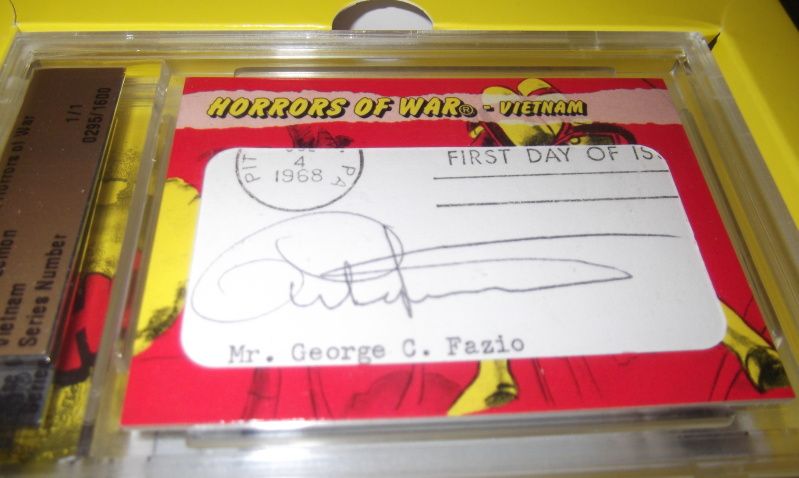 Peter C Lemon:  Peter C. Lemon is among the most dynamic motivational keynote speakers of our time. An Ambassador of courage, determination and triumph, he profoundly enriches the lives of others. Mr. Lemon is one of the youngest surviving recipients of America's highest award: The 'Congressional Medal of Honor'. Vastly outnumbered in a fierce enemy attack in Vietnam, Mr. Lemon assisted in saving the lives of his team. Although wounded numerous times, he refused to be evacuated until the enemy had retreated and his injured comrades were airlifted to safety. Entertaining audiences as a professional speaker for over a decade, Mr. Lemon is an acclaimed author and the executive producer of the Emmy winning documentary Beyond the Medal. An industry leader for thirty years, his companies provided business insurance to over three thousand restaurants nationwide and professional liability insurance for the 70,000 nurses of the National Organization of Health Care Professionals and as a commercial general contractor built convenience stores for Amoco, Exxon, Phillips, Conoco and Diamond Shamrock. Recently, the President of the United States presented Mr. Lemon the prestigious 'Outstanding American by Choice' award in a 2009 White House ceremony recognizing his life of professional achievement and civic contribution. Mr. Lemon is an inductee in the elite special operations 75th Rangers 'Ranger Hall of Fame', holds a Bachelors Degree in Speech and a Masters of Science degree in Business Administration. Author of Beyond the Medal, A Journey from Their Hearts to Yours and executive producer of the documentary Beyond the Medal of Honor, Mr. Lemon donated his book to the 32,000 secondary schools in the United States. In partnership with his friend Ross Perot, the documentary, with curriculum, was given to over 17,000 public and private high schools to inspire our youth to become worthy citizens. Mr. Lemon continues to volunteer his time with our children, advocating positive decisions that build character and motivating them to live their dreams. 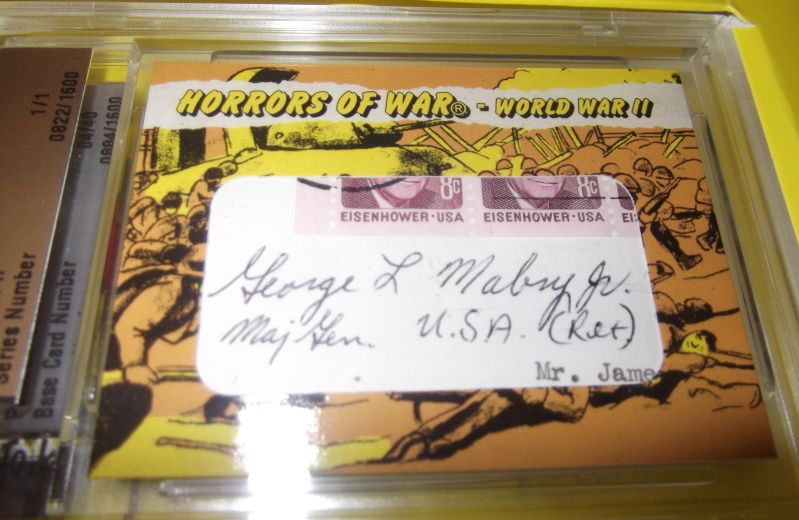 George L Marby  General Mabry, who joined the Army after graduating from Presbyterian College in Clinton, S.C., in 1940, landed with the Fourth Infantry Division on Utah Beach in Normandy on D-Day, June 6, 1944. He was awarded the Medal of Honor for his actions during an attack on Nov. 20, 1944, in the Huertgen Forest near Schevenhutte, Germany. He was cited for clearing a path through a German minefield, capturing three German bunkers, killing three German soldiers and injuring another with his rifle butt. He captured nine other Germans. He served as a regimental commander of the 31st Infantry Regiment in Korea from 1954 to 1956, and later spent 10 years in the Panama Canal Zone, including four as commanding general. As the commander of American support troops in Vietnam in 1969, General Mabry ordered an investigation of eight Special Forces soldiers accused of murdering Thai Khac Chuyen, an American espionage agent suspected of also working for the Vietcong. The Army later dropped the charges against the Green Berets, saying that the Central Intelligence Agency had refused to let its personnel testify at their courts-martial.  Frank Guidone 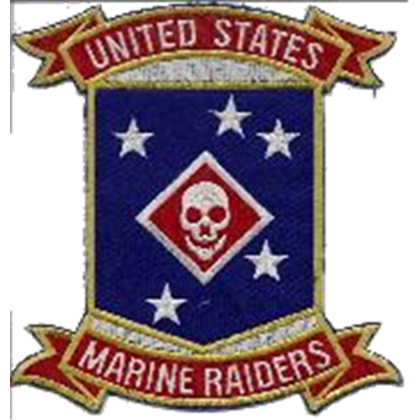 Marine Raider - Captain Frank Guidone USMC (Retired) Frank Guidone may well be described as the quintessential Marine Raider. He participated in the initial assault landing of United States World War II troops in the Tulagi landing; he participated in raiding the Japanese operation base at Tasimboko; he participated in defeating the Japanese assault in the battle of Edson’s Bloody Ridge; he contributed to the defeat of the Japanese in the second Matanikau battle; in addition, he operated in enemy territory, made prolonged essential reconnaissance and obtained valuable intelligence in the New Georgia war canoe patrol; guided troop landing and fought in the New Georgia campaighn. His contribution to the success of Marine Raider operations in the Solomon Islands was remarkable.  Dick Rossi  John Richard Rossi was born on April 19, 1915 in Placerville, California. Schooled in San Francisco, he attended the University of California at Berkeley. He entered the Navy for flight training in the fall of 1939. Upon receiving his wings and commission in 1940, he was assigned as Flight Instructor at Pensacola, Florida. “Dick” Rossi resigned his Navy commission in 1941 to join the American Volunteer Group (AVG) under the command of Colonel Claire Chennault. He arrived in Rangoon on November 12, 1941 with a group of thirty volunteers on the Dutch ship M.S. Bosch Fontein. He was undergoing a training program in P-40 aircraft at Toungoo, Burma, when Pearl Harbor was attacked. Rossi engaged in his first combat over Burma in January 1942 (the second time he fired the guns in the P-40 he was in combat) and flew his last over the East China front in July 1942. Most of his combat missions were over Rangoon. Dick was a member of the AVG’s First Pursuit Squadron (Adam and Eve). He also did detached combat duty with the Second and Third Squadrons, serving under all the AVG squadron commanders. When the AVG, better known as the “Flying Tigers,” was disbanded in 1942, Rossi joined the China National Aviation Corporation, flying supplies from India to China. By the time the war was over he had flown more than 735 trips across the “Hump.” After the war, Rossi, a founder of the freight carrier, the Flying Tiger Line, returned to California where he flew as a captain for 25 years, logging a lifetime of over 25,000 hours flying. He has served as president of the American Volunteer Group Flying Tigers Association for fifty years and is a member of the American Fighter Aces Association. The Chinese government awarded Rossi the White Cloud Banner (Yun Mo) V Grade, China Air Force Wings (5 Stars) and the China War Memorial (Kang Chan Chi-nien Chang) Decoration. He has also earned and received two Distinguished Flying Crosses, the Air Medal, two Presidential Unit Citations, a World War II Victory Medal, the Asiatic Pacific Campaign Medal with four bronze stars for the India-Burma, Central Burma, China Defensive and China Offensive campaigns, and the Honorable Service Lapel Button. In 1969 he was given a Commendation from the USAF for sustained aerial support of combat operations in South Vietnam. The AVG will be inducted into the Confederate Air Force Hall of Fame in 1998, in Midland Texas.  Kee Pon 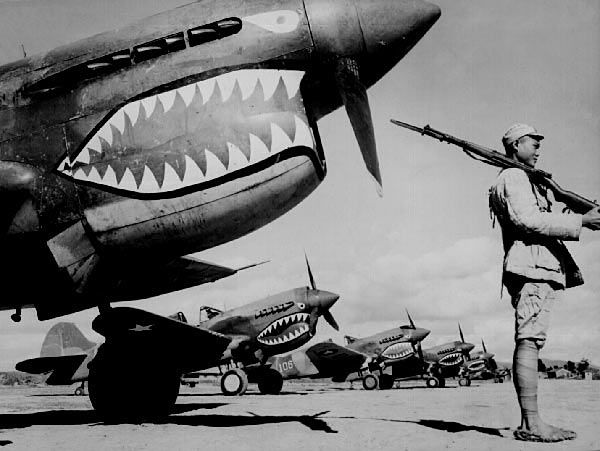 Kee Jeung Pon was one of eleven Chinese-American technicians employed by Central Aircraft Manufacturing Company to help assemble the AVG P-40s in Rangoon. When the operation was closed down in January 1942 and CAMCO moved back to Loiwing on the China-Burma border, they joined the AVG with the title of engineering specialist, and when the group was disbanded in July most joined the U.S. Army in China. His death leaves nine known survivors of the original Flying Tigers.  Paul Zorner 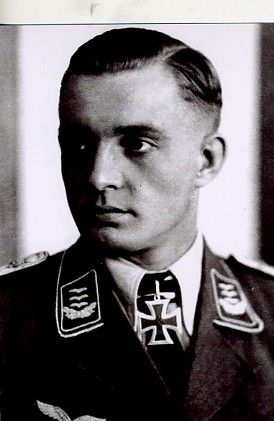 Zorner joined the Luftwaffe in October 1938 and began training at Oschatz-Sachsen on 7 November. He attended Luftkriegsschule 2 at Berlin-Gatow in and in November qualified and was sent for conversion training on twin-engine aircraft. He was posted as an instructor in July 1940. In March 1941 Leut. Zorner was posted to KGr.z.b.v. 104. to fly the Junkers Ju 52 transport aircraft. He flew over 160 missions in the Mediterranean area, and in August 1941 operated over the Ukraine. In October 1941 Zorner commenced training as a night fighter pilot. He was the posted to 8. NJG 2 based at Gilze-Rijen to fly the Junkers Ju 88 C night fighter. In December 1942 Zorner was posted to command 2./NJG 3 at Wittmundhafen flying the Bf 110 and Do 217 night fighters. On the night of 17-18 January 1943, Zorner claimed his first victory. By March, he had six victories to his credit. He was shot down on 17 April 1943 while intercepting USAAF bombers during the day, force-landed his Bf 110 near Cloppenburg. He claimed his 10th victory on 25-26 July, a Halifax bomber raiding Essen, but he and his crewman had to bale out when his Bf 110 G-4 had an engine catch fire. In August 1943 Zorner was made Staffelkapitän of 8./NJG 3. He claimed three Lancaster bombers on 23-24 December, and another Lancaster near Luckenwalde as his 20th claim on 2-3 January 1944. He claimed another four Lancasters shot down on the night of 19-20 February and five more shot down on 24-25 February. Zorner claimed a Mosquito night fighter of 169 Squadron shot down on 20-21 April. Zorner was appointed Gruppenkommandeur of III./NJG 5 in April 1944. On the night of 27-28 April, Zorner claimed three Lancasters shot down attacking Friedrichshafen to take his total to 46. Zorner was awarded the Ritterkreuz in June for 48 victories. He shot down four bombers targeting railway installations in support of the Normandy invasion on the night of 10-11 June and then three Halifaxes targeting V-1 launch sites in the Pas-de-Calais on 24-25 July. Zorner was awarded the Oakleaves on 17 September for 58 victories. In October 1944 Zorner was appointed Gruppenkommandeur of II./NJG 100 equipped with Ju 88 night-fighters. In February 1945 II./NJG 100 was relocated to Wien-Seyring. Major Zorner claimed his 59th and last victory on 5-6 March 1945, a B-24 bomber near Graz. Zorner surrendered his Gruppe to United States troops near Karlsbad on 10 May 1945. He was then handed over to Soviet Forces on 17 May. He returned to Germany after years of incarceration in December 1949. Zorner studied mechanical engineering in Stuttgart and entered the field of refrigeration engineering before he rejoined the Bundesluftwaffe in 1956 . He was not passed fit to fly jet fighters and returned to civilian life in May 1957. He was employed within the chemical industry. He retired in 1981 as a chief engineer with Hoechst near Frankfurt. Zorner was credited with 59 victories recorded at night in 272 missions, of which 110 were night fighter missions.  Charles O'Neil 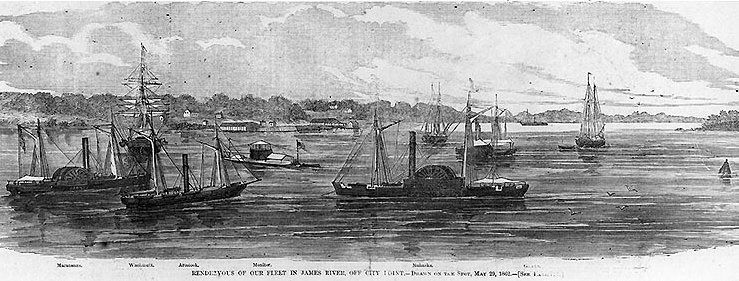 Charles F. O’Neil was born in Manchester, England, March 15, 1842, son of John and Mary Anne (Francis) O’Neil. At the age of five he came to the U. S. with his parents, who settled in Boston, Massachusetts. He went to sea at the age of 16, making a trip to Calcutta on the Oliver Putnam of Newburyport, Massachusetts. On his second voyage on the Oliver Putnam, the vessel foundered in the Indian Ocean and O’Neil and others drifted for five days before being rescued by a French slaver. O’Neil’s naval career was lengthy and spectacular. At the opening of the Civil War, he enlisted in the United States Navy. He achieved the rare feat of rising from enlisted status in 1861 to flag rank by 1897. He was master’s mate on the U. S. S. Cumberland at the fight at Hatteras inlet and in the battle with the Merrimac in Hampton Roads, when the Cumberland was rammed and sunk. While the crew struggled in the water, O’Neil rescued Lt. Commander Morris, commander of the Cumberland. For his heroism, he was promoted to acting master. As navigator on the gunboat Rhode Island, O’Neil participated in the attacks on Fort Fisher and blockade duty. At war’s end, he held the rank of acting volunteer lieutenant. In 1868, he was appointed lieutenant in the regular Navy. He became commander in 1884, and captain in 1897, and rear admiral in 1901. While serving as first commander of the U.S.S. Marblehead, O’Neil sailed to the Nicaraguan coast in 1894. There he negotiated the sovereignty of Nicaragua to the satisfaction of the U. S. and Great Britain which had served as the country’s protectorate. O’Neil also protected U. S. interests in Turkey in 1892 and 1893. An expert in naval ordnance, O’Neil became superintendent of the naval gun factory at the Washington naval yard. He played a key role in developing the modern U. S. Navy. In 1897, he was made Chief of the Bureau of Ordnance. Following the Spanish-American War, O’Neil designed naval guns of all calibers and as president of the U.S. Navy board of construction prepared plans for the Navy’s new vessels. He later was sent abroad to study the ordnance of departments of foreign navies. He married April 6, 1869 to Mary Caroline, daughter of Richard Frothingham, historian of Charlestown, Massachusetts. They had one son, Dr. Richard Frothingham O’Neil. Rear Admiral O’Neil died at Chelsea, Massachusetts February 28, 1927. | ||
|
| Member |
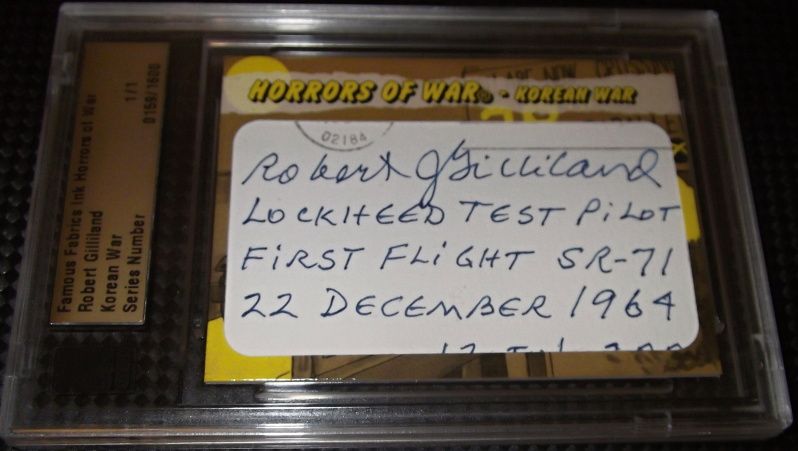 Robert Gilliland 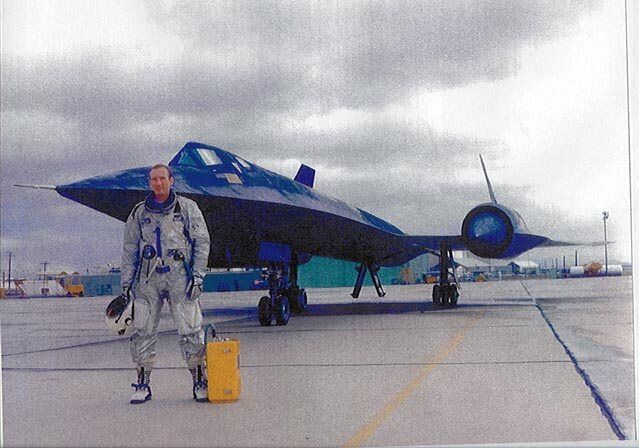 Robert J. "Bob" Gilliland was born in Memphis, TN. During WWII, at the age of 17, he volunteered for the U.S. Navy and was training to go into submarines when he was accepted into the U.S. Naval Academy at the war's end. As a midshipman he served on various warships, including a heavy cruiser, destroyer, carrier, and the battleship USS North Carolina in which his GQ station was the 16 inch gun turret. He graduated from Annapolis in 1949 with a degree in engineering. Just prior to graduation he volunteered to enter the USAF in the first class to be offered this opportunity. He did his flight training at Randolph Field, TX, and soloed in the T-6. He did advance training at Chandler, AZ, flying the F-8O Shooting Star. His next assignment was to an operational fighter group flying the P-47 Thunderbolt and the F-84 Thunderjet. In 1952 Bob volunteered for a combat tour in Korea flying the F-84 in a fighter-bomber unit at K-2 Airport, Taegu, Korea. In 1953 he returned to Ramstein AFB, Germany flying the F-86F Sabre Jet. Later that year he was assigned to Eglin AFB, FL, as a test pilot in fighter test and the U. S. Armament Center. While at Eglin he had the opportunity to fly most of the aircraft in the USAF inventory. He left active service the following year and returned to his hometown, Memphis, where he joined the Tennessee Air National Guard. There he flew the P-51, B-26, RF-80, RF-84 and the F-104A, until 1960 at which time he joined Lockheed as a civilian test pilot flying all models of the F- 104 Starfighter. He also checked out some of the world?s leading pilots such as the Luftwaffe's Gunther Rall and Johannes Steinhoff, Canada's Wing Commander Kenneth Lett, and USAF General John Dunning. Bob worked closely with the Air Forces of the Republic of China (Taiwan), Canada, Japan, Germany, and Italy, both in this country and abroad. Gilliland made the first flight of the Fiat-Aeritalia F-104S produced in Italy under license from Lockheed. Lou Schalk, whom Bob had known in Munich, Germany, was then Kelly Johnson's Chief Test Pilot (Johnson was Founder of the Lockheed Skunk Works.) and introduced Bob to Kelly who then invited Bob to join his organization. In 1962 Bob went on to test the fastest and highest flying airplanes ever built, including the A-Il, A-12, YF-12A, and the SR-71. Bob was the first man to fly the SR-71A, the SR-71B, and YF-12A #936, which was later modified into the SR-71C. In the process of doing the principal testing of these planes, He made the first flight of the SR-71 on December 22, 1964, taking the aircraft to mach 1.5 and 50,000 feet altitude. He was the first and principal test pilot for the SR-71 Aircraft Series and the first pilot to achieve full envelope expansion of the speed and altitude in the SR-71. On 22 December 1964, Lockheed Test Pilot Bob Gilliland flew the first flight of SR-71 #950 at Palmdale, Calf, flying for 1 hour and over 1000 mph. As the SR-71 program continued to grow, Gilliland continued to be the first pilot to fly each Blackbird as it became operational, logging more experimental supersonic flight test-time above Mach 2 and Mach 3 than any other pilot. Bob logged more flying time at Mach 3 then any other man. This flying time would only be exceeded by a few operational pilots and only over the long operating career of the Blackbird. The Society of Experimental Test Pilots awarded the Kincheloe Award to Bob in 1964 for his work on these super secret planes. This is an award that is given annually for the Test Pilot of the Year. Bob was also involved with fellow Lockheed pilot Darryl Greenamyer in breaking the FAI world restricted altitude speed record of 988.26 mph in a highly modified F-lO4RB on 24 October 1978. Gilliland logged over 6,500 hours in many different aircraft, including the F-104, F-84, F-86, T-6, P-47, FY-12A, and SR-71. Bob, now retired from Lockheed, is involved in various financial ventures, including serving as General Manager of DeSoto Oil and Gas Trust of Memphis, TN. He also serves as a trustee of ANA (the Association of Naval Aviation), the mother organization of naval carrier Tailhookers, Marine Corps pilots, training pilots, etc. Bob remains in demand as an aviation speaker. A fellow in the Society of Experimental Test Pilots, Gilliland was awarded the Iven C. Kincheloe Award in 1964 for his work on the Blackbird program. He was named an Eagle by the Air Force Flight Test Historical Foundation in 1998 and received the Godfred L. Cabot Award established by the Lancaster City Council. Gilliland was awarded the Aerospace Walk of honor for his distinguished aviation career marked by significant and obvious achievements beyond one specific accomplishment. 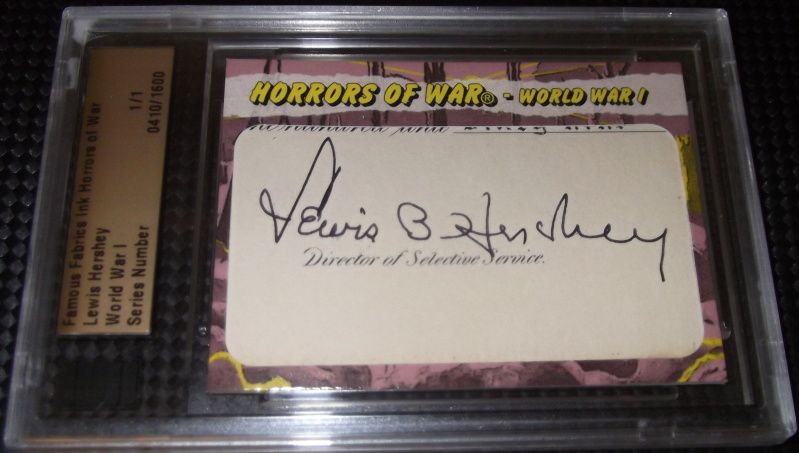 Lewis Hershey 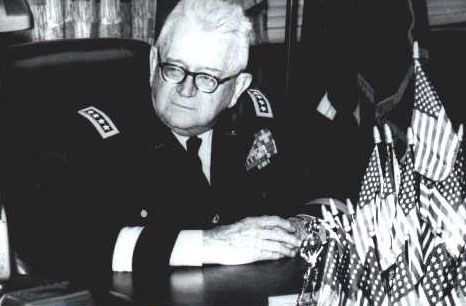 If ever a man was cut out for a job, it surely was Lewis B. Hershey, the most famous Director of the Selective Service System. During his nearly 29 years as Director, he walked a proverbial tightrope serving six Presidents, pleasing Congress, and placating the American public. Hershey grew up on an Indiana farm in the late 1800s. With determination, he not only completed high school at a time when many left school after the eighth grade, but he went on to college. While still a young man, he served as a deputy to his father who was the local Sheriff. He also served as principal and teacher in a small school. In 1911, he joined the Indiana National Guard for which he was paid ten cents for each weekly drill he attended. His first duty as a guardsman was in Indianapolis where his unit was sent to put down unrest as a result of a strike. As officers in the guard, at that time, were elected by popular vote, he succeeded in being elected as a Lieutenant in 1913. The Indiana Guard was called to duty on the Mexican border in Texas, and Hershey commanded a company there for a short time in 1916. He returned to the University of Indiana to do graduate study later that same year. When the Indiana Guard was called up in 1917, Hershey was sent to an artillery unit and promoted to Captain. About this time, he married his longtime Indiana sweetheart, Ellen Dygert. His unit was sent overseas and arrived in Europe just as the war ended. He continued to serve in Europe for almost a year during which time he traveled and gained a perspective on the situation there. Upon his return to America, he received a regular army commission as a Captain in 1920. While serving at Ft. Sill, he suffered an injury to his right eye in a polo game that caused him to lose sight in that eye. Nevertheless, he attended Command and General Staff School in 1931. Following a short tour in Arkansas preparing camp sites for the newly formed Civilian Conservation Corps, he was selected to attend the War College which he completed in 1934. After 15 years as a Captain, he was promoted to Major while serving in Hawaii at Fort Shafter. Between that duty and his next assignment in Washington, he decided to take his family on a trip around the world. In 1936 he was assigned to the War Department in Washington. Three years before, a group called the Joint Army Navy Selective Service Committee had drawn up a bill creating a new Selective Service System. A group of Reserve Officers called selective service specialists had been recruited. They were chosen for their influence in their local communities and were already taking correspondence courses about Selective Service with the idea they would form a nucleus for a national headquarters. Bro. Hershey’s previous study in behavioral psychology, both at Command and General Staff School and The Army War College, made him a good choice to work with these selected recruits. He traveled throughout the country winning their loyalty and instilling the philosophy which was to be the basis of the Selective Service System. In July and August of 1940, Congress began its debate on the Selective Service Bill, and by virtue of his four-year association with the concept, Hershey was a prime resource. It was then that he injected his personal philosophy about a decentralized system which would be operated by local boards. In September of 1940, he was promoted to Lt. Colonel. It was in these proceedings that his ability to deal with Congress as well as handle controversy first became evident. A university president was assigned to be the first Director of Selective Service, but in reality, Hershey, as his assistant, handled most of the day-to-day operation. When the university president resigned in April of 1941, Hershey became Acting Director. He was appointed Director July 31, 1941, and was promoted to the rank of Brigadier General, bypassing the rank of Colonel. Throughout his nearly 30 years as Director of Selective Service, he most always knew what Congress and the American public would accept. Any individual responsible for interrupting the lives of so many people would certainly be subject to criticism, and he had his share, but he always managed to stay in general favor. Bro. Hershey served under six Presidents and during his administration as Director, 14,555,000 were drafted into service. Brother Hershey was introduced to Masonry early in life when his father took him to the local Lodge. He was raised in Northeastern Lodge No. 210 in Freemont, Indiana. Upon his retirement from the Directorship, he was honored by many organizations including the Freemasons for his many years of patriotic service. Although Hershey advanced to the rank of General (four stars), he never left his common roots. His folksy manner endeared him to almost everyone who met him, even some of his avowed opponents.  Hajo Herrmann 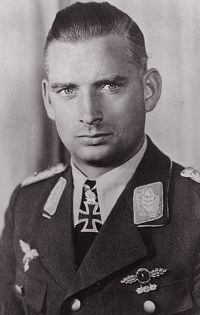 Hajo Herrmann (1913-2010) was an outstanding German Luftwaffe pilot who also distinguished himself during the Second World War as a courageous air force commander and innovative air defense tactician. After the war he built a new career as an attorney, and became known for his role in civil rights cases, defending patriots and so-called “Holocaust deniers” accused of violating German laws against free speech. Until his death at the age of 97, he remained steadfastly loyal to his people, his heritage, and the ideals of his youth. After beginning his military career as an infantry officer, he was commissioned in the newly formed Luftwaffe in 1935. From 1936 until 1937, he was a bomber pilot in the Condor Legion, which aided the Nationalists in the Spanish civil war. After the outbreak of war in Europe in 1939, he flew planes in the campaigns in Poland and Norway. By 1940 he was Commander of the 7th Staffel KG-4 combat squadron, and led many air attacks on England during the “Battle of Britain.” In February 1941, his group went to Sicily, where it flew against British forces in Malta and Greece. In one attack, Herrmann dropped a bomb on an ammunition ship that set off a explosion so devastating that it sank eleven ships and rendered the Greek port of Piraeus unusable for months. In early 1942, he was Commander of III/KG 30, which struck from Norway against Allied Arctic convoys, including attacks on convoy PQ-17 In mid-1942 he was assigned to the Luftwaffe Operational Staff, where he soon made a name for himself as a outstanding tactical and operational innovator in strengthening Germany’s air defenses. In response to the ever more devastating attacks by British and American bombers, Herrmann created Luftwaffe night fighter attack squadron Jagdgeschwader 300, nicknamed Wilde Sau (German: wild boar), which used an innovative freelance fighter technique. Experienced night flying pilots and ex-instructors in Fw 190 fighters would visually “free-hunt” enemy bombers by the light of fires below, and with the aid of special 'flare-carrier” Junkers JU 88 s following the bomber streams, as well as the use of the Naxos radar detector unit on some of these single-engined fighters to find British night bombers when they were using radar. In December 1943, the 30-year-old Herrmann was appointed Inspector of Aerial Defense. By 1944, he was Inspector General of night fighters. At the end of 1944, he led the “9. Flieger-division (J).” During the war, all Germans were targeted for death in a ruthless bombing effort that Allied authorities themselves called a terror campaign. More than half a million were killed, and many more were maimed or wounded. More than seven million were made homeless. Herrmann’s important role in strengthening his homeland’s air defenses helped to save the lives of many women, children and other civilians from horrific suffering and death. As a bomber pilot, Herrmann flew 320 missions and sank twelve ships totaling 70,000 tons. He also flew more than 50 night fighter missions, destroying nine Allied bombers He was shot down four times, and wounded twice. For his valor and skill, he earned a number of decorations, including the Knight’s Cross with Oak Leaves and Swords, the German Cross in Gold, and the Iron Cross, first and second class. At the end of the war Herrmann became a Soviet captive, and was held for ten years in Soviet Russian prison camps. After returning to his homeland in 1955, he studied law and settled in Düsseldorf., where he worked as an attorney. He served as a civil rights lawyer in defending such “thought criminals” as Otto Ernst Remer, David Irving and Fred Leuchter, who were charged with violating German laws against free speech. In the case of Irving, Herrmann defended the British historian at no charge in three “thought crimes” trials, 1990-1993. Herrmann was a friend of the Institute for Historical Review. On Nov. 8, 1998, he addressed an IHR meeting in southern California, where he provided fascinating details about his remarkable life, and insights into the climate of intellectual repression in Germany. On several occasions he sought help and advice from IHR director Mark Weber. Herrmann was the author of two volumes of memoirs. An English-language edition of his memoirs was published in 1991 under the title Eagle’s Wings. He remained active into the final years of his life, practicing law and addressing meetings.  Max Heimo Rehbein  Max H. Rehbein - the "H" stands for Heimo - is only one of five awarded the Knight's Cross proven German soldiers of World War II who set out on radio and television after the war. Max H. Rehbein was on 9 December 1918 in Cologne, the son of the privy privy councilor Arthur Rehbein (b. 1867) was born. After finishing high school at a local high school Max H. Rehbein was convened in 1938 for labor and military service, that he belonged to a generation of young German, who at that time, without a professional soldier to have been, from the peacetime conscription to grow into the war, and it for almost six years at the front witnessed to the bitter end. The young Cologne was one of the pioneers and proven in combat, which earned him promotions and decorations after him on 7 9th 1944 as a captain on the staff of motorized pioneer Regiment 10 was awarded the German Cross in Gold, presented the 24th Armoured Division the then 26-year old captain and typically battalion commander of Engineer Battalion 23 for knights cross. He was awarded this on 03.05.1945, after the remains of his division from the East Prussian Samland could be related to Schleswig-Holstein. In these fights was also self Rehbein, who became just before the war, the Major, seriously wounded, but fortune favored him hold that has remained loyal to him because of his ability to this day. This enabled the ex-Major in spite of his wound, from Schleswig-Holstein to eke Hamburg, where he worked first as a driver of a British staff officer. Then he moved to his fiancée to Berlin-Zehlendorf over, in their parental home, the American occupiers had installed a press center. Rehbein's fiancee did translation work for themselves once in Berlin established what has been called the American press officer Curt Riess (1902-1993), the berlinerte still like a native, and in the following years became one of the most successful German-language journalists and writers. Made with him he known the future wife Rehbein, Riess, who was romantically involved just with the famous actress Kathe Dorsch, the employment wrote seeking young man a letter of Axel Eggebrecht (1899-1991), prominent one of the early in those post-war years and influential broadcast journalists, who at the time headed the political department of Radio Hamburg, in Riess recommendation stated: "Dear Axel, I hereby present to you Mr. Rehbein. Kate and I are convinced that he has a high journalistic talent. You would do well to give him immediately to a senior position. Your Curt." The interview in Hamburg has established that although the so kindly recommended young man had no practical experience in journalism, on no theoretical training at a university or even a journalism school could point and actually - as he himself admitted frankly - except the perfect operation of a machine gun and similar warlike hand skills after graduation barely learned something professionally Usable had Eggebrecht has yet been impressed by the candidates and have come to a positive decision. He gave it to a permanent position at 01.01.1947 transmitter with a monthly salary of 400 Reichsmarks. Thus began for Max - still not "H." - Rehbein of the social order and rise from the military had to civilian life at a time, waiting as tens of thousands of his fellow officers in the prison camps of Western and Eastern opponents still longing for the day of freedom and integration into civilian life for years. He took his chance, he married and started immediately on his first foreign report by as without a passport on an old, abgetakelten patrol boat, which now went by the name "Neptune" on fishing, for a symbolic Heuer of 1 marks a month Leichtmatrose anmusterte, got a seaman's book and mitmachte a weeklong trip to the Lofoten Islands. This was anything but a pleasure cruise, but was below most adventurous circumstances with 24 hour service around the clock and hard physical labor in dirt and cold, but he was then proud to be the first German radio journalist after the war, so true to life driving abroad from a to report. After his first wife had died nine months after the wedding, he prepared in early 1952 before a new marriage. When on 6.1. 1952 received the invitation to join the first departure of the sail training ship "PAMIR" the merchant navy as the only broadcast journalist who went from Hamburg to Rio de Janeiro to Patagonia and from there back to Hamburg. Only in July 1952 was finally the postponed wedding be made up, along with a 46tägige adventurous trip across the Atlantic was one of the last tall ships, which had no auxiliary engine with a broken port anchor chain struggling through severe storm. Rehbein them reported daily on radio Norddeich directly from aboard the "PAMIR", the "Echo of the Day". So had the journalistic newcomer delivered his masterpiece and remained on course for success. Besides, he had occupied in the 1948/49, at the Hamburg University lectures in philosophy, literature and journalism. From 1947 to 1952 he worked as a reporter for the NDR Radio, joined in 1952 NDR television - from 1954 as chief reporter - and was there in 1958 Head of the foreign and domestic policy. Also for economic and health policy, he was temporarily in charge. From 1964 he worked for the NDR as a special correspondent and author series. Much attention has been given his television documentary series "centers of power" and "pioneers and adventurers" trilogy and the "New York - Capital of the World", also shows such as "In Search of Peace and Security" and "European upper classes deserve" mention. From 1983 to 1993 produced Max H. Rehbein, who since 1982 has worked as an independent film producer, for ZDF, the popular adventure series "action". Also in several books published was reflected his diverse journalistic use, so "reporter in the Far East" (1959), "pioneers and adventurers" (1970) and "travel around our world" (1973). For his television work garnered Max H. Rehbein prices - like no other - a churning, which began with the German Television Award in 1959 and 1960, continued with the gold medal of the first film festivals World Exhibition of transport in Munich and two National Film awards the Mannheim Film Festival (1966) and got international flair with the 1st Price of the VI. Festival International du Film Industriel in Rouen. Rehbein 1969 was the first in Berlin 10th of the price Festival du Film Industriel to take home, it was followed by the 1974 Golden Screen, 1978 the Adolf Grimme Award in Gold, 1979, the Golden Camera and 1980 the Golden Gong and the Golden Rose. After so many recognitions of journalistic achievements can be said that Max H. Rehbein is one of the quite a few men who have proven themselves like soldiers not only as Ritterkreuzträger especially, but also after the war in many civilian areas great and so an example for younger generations have been her husband. | |||
|
| Member |
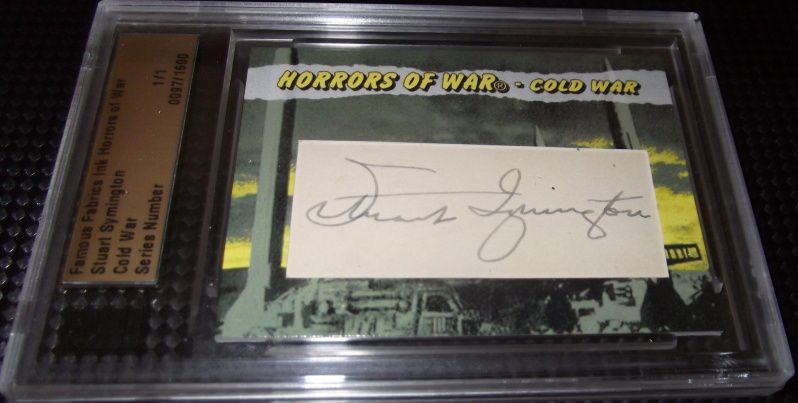 Stuart Symington  William Stuart Symington (/ˈsaɪmɪŋtən/; June 26, 1901 – December 14, 1988) was a businessman and political figure from Missouri. He served as the first Secretary of the Air Force from 1947 to 1950 and was a Democratic United States Senator from Missouri from 1953 to 1976. Education and business career Symington was born in Amherst, Massachusetts, and grew up in Baltimore, Maryland. He graduated from Yale University in 1923. At Yale he was a member of Delta Kappa Epsilon fraternity (Phi chapter), the Elihu senior society, and served on the board of the Yale Daily News. During World War I, Symington enlisted in the United States Army at the age of 17 and was later commissioned as a second lieutenant and discharged at that same rank. In 1923, Symington went to work for an uncle in the shops of the Symington Company of Rochester, New York, manufacturers of malleable iron products. Two years later he formed Eastern Clay Products but in 1927 returned to the Symington Company as executive assistant to the President. Symington resigned in 1930 to become President of the Colonial Radio Corporation. In January 1935, he accepted the presidency of Rustless Iron and Steel Corporation (manufacturers of stainless steel) but remained a director of Colonial Radio Corporation. When Rustless Iron and Steel Corporation was sold to the American Rolling Mill Company in 1937, Symington resigned and in 1938 accepted the presidency of Emerson Electric Company in St. Louis, Missouri. During World War II he transformed the company into the world's largest builder of airplane gun turrets. First Secretary of the Air Force He resigned from Emerson in 1945 to join the administration of fellow Missourian Harry S. Truman. His first positions were chairman of the Surplus Property Board (1945), administrator of the Property Administration (1945–1946) and Assistant Secretary of War for Air (1946–1947). On September 18, 1947, the Office of the Secretary of the Air Force was created and Symington became the first Secretary. Symington had a stormy term as he moved to give the United States Air Force (which previously had been part of the Army) respect. He had numerous public battles with Secretary of Defense James Forrestal. During his tenure there was a major debate and investigation into production of the Convair B-36 Bomber, which was the last piston-powered bomber at the beginning of the jet age. Major accomplishments during his term as Secretary included the Berlin Airlift and championing the United States Air Force Academy. Symington resigned in 1950 to protest lack of funding for the Air Force after the Soviets detonated their first nuclear weapon. He remained in the administration as Chairman of the National Security Resources Board (1950–1951) and Reconstruction Finance Corporation Administrator (1951–1952). Senate Armed Services and Foreign Relations committees As a member of the Senate Armed Services and Foreign Relations committees, Symington specialized in military affairs and became known as an advocate for a strong national defense. He was also a strong supporter of the Air Force Academy. In 1954, he charged that the Department of Defense had wasted millions of dollars on outdated weapons. He became a leading critic of U.S. involvement in the Vietnam War (1957–1975). In 1958, Symington accused the RAND Corporation of defeatism for studying how the United States might strategically surrender to an enemy power. This led to the passage of a prohibition on the spending of tax dollars on the study of defeat or surrender of any kind. However, the senator had apparently misunderstood, as the report was a survey of past cases in which the United States had demanded unconditional surrender of its enemies, asking whether or not this had been a more favorable outcome to U.S. interests than an earlier, negotiated surrender might have been.[1] Opponent of Joseph McCarthy Symington was an especially prominent opponent of Senator Joseph McCarthy, to the vexation of the latter, who nicknamed him "Sanctimonious Stu". He involved himself in the case of Annie Lee Moss, who had been brought before McCarthy's committee under the accusation that she was a Communist spy. Evidence supporting this claim was given by an undercover FBI agent who could not be cross-examined by Mrs. Moss or her counsel. As it appeared that Moss had been mistakenly identified, Symington proclaimed before the packed audience that he believed she was not a Communist and had never been, receiving thunderous applause from those present. Later that year, Symington took a lead role in censuring McCarthy during the Army–McCarthy hearings, capitalizing upon his prominence and expertise as a former Secretary of the Air Force. Presidential candidacy In 1959, Symington, then Chairman of the National Security Resources Board in Washington, D.C., was preparing to run in the 1960 presidential election and won the backing of former President Harry S. Truman, but eventually lost the nomination to Senator John F. Kennedy. On July 2, 1960, Truman announced that he would not be attending the Democratic National Convention in Los Angeles. Truman was miffed that the convention was being controlled by the "overzealous" supporters of Kennedy. Announcing his decision, Truman restated his support for the candidacy of Symington and added, "I have no second choice".[2] Symington, unlike Kennedy or Lyndon B. Johnson, refused to speak to segregated audiences in the southern United States and this hurt his chances. He was considered Kennedy's first choice for Vice President but was dropped in favor of Texas Senator Lyndon B. Johnson. He advised President Kennedy as a member of EXCOMM during the October 1962 Cuban Missile Crisis. 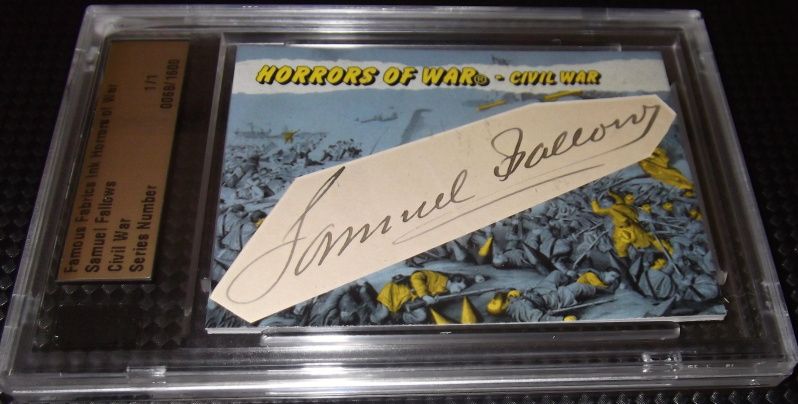 Samuel Fallows 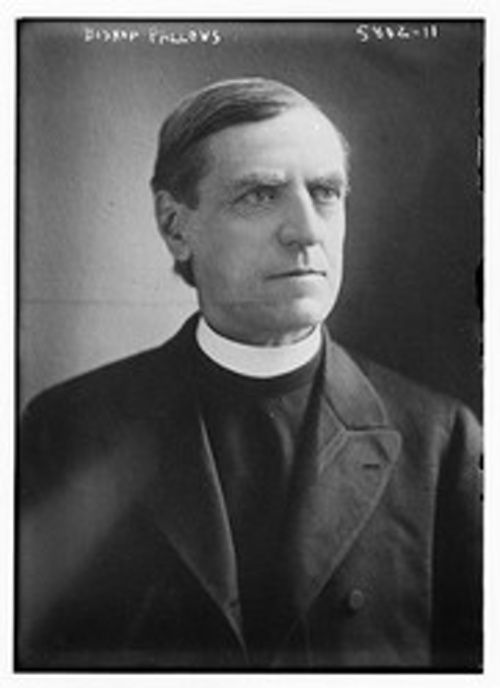 Fallows was born in Pendleton, Greater Manchester, England and emigrated to Wisconsin in 1848.He became a Methodist minister in 1858. He graduated from the University of Wisconsin–Madison in 1859.He was elected Vice-President of Gainsville University, and entered the ministry of the Methodist Episcopal Church in Oshkosh. While he was ministering to this church, the Civil War began. He resigned his charge, and became chaplain of the 2nd Wisconsin Infantry. During the American Civil War, he fought in the Union Army, rising to lieutenant colonel of the 40th Wisconsin Volunteer Infantry Regiment and colonel of the 49th Wisconsin Volunteer Infantry Regiment.He was mustered out of the volunteers on November 1, 1865.On January 13, 1866, President Andrew Johnson nominated Fallows for appointment to the grade of brevet brigadier general of volunteers to rank from October 24, 1865, and the United States Senate confirmed the appointment on March 12, 1866. Fallows was a Methodist pastor following the war, and was appointed to Summerfield United Methodist Church from 1865 to 1868.In 1875 he joined the Reformed Episcopal Church, where he became a bishop in 1876. He was a public figure notable for his efforts in public education, prison reform, and the temperance movement. He was the Superintendent of Public Instruction of Wisconsin, 1870-1874.[6][7] He was chaplain at the dedication of the Lincoln Memorial in Washington, D.C. Samuel Fallows died at Chicago, Illinois on September 5, 1922 and was buried at Forest Home Cemetery, in Forest Park, Chicago. 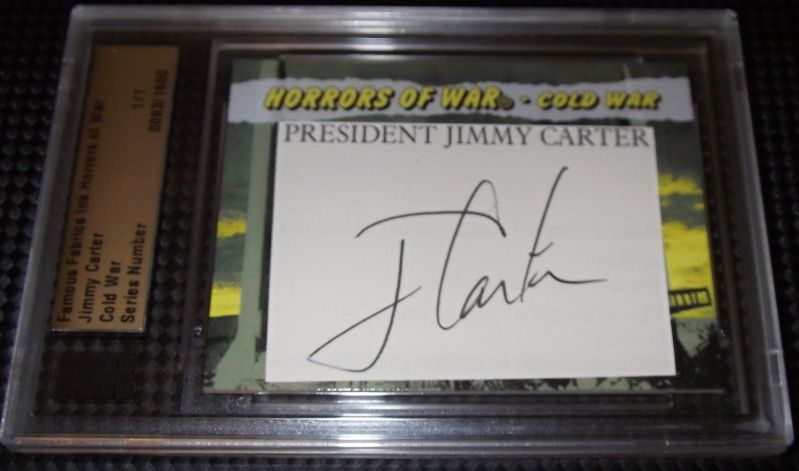 Jimmy Carter  Naval career After high school, Carter enrolled at Georgia Southwestern College, in Americus. Later, he applied to the United States Naval Academy and, after taking additional mathematics courses at Georgia Tech, he was admitted in 1943. Carter graduated 59th out of 820 midshipmen at the Naval Academy with a Bachelor of Science degree with an unspecified major, as was the custom at the academy at that time. Carter served on surface ships and on diesel-electric submarines in the Atlantic and Pacific fleets. As a junior officer, he completed qualification for command of a diesel-electric submarine. He applied for the US Navy's fledgling nuclear submarine program run by then Captain Hyman G. Rickover. Rickover's demands on his men and machines were legendary, and Carter later said that, next to his parents, Rickover had the greatest influence on him. Carter has said that he loved the Navy, and had planned to make it his career. His ultimate goal was to become Chief of Naval Operations. Carter felt the best route for promotion was with submarine duty since he felt that nuclear power would be increasingly used in submarines. Carter was based in Schenectady, New York, and working on developing training materials for the nuclear propulsion system for the prototype of a new submarine. On December 12, 1952, an accident with the experimental NRX reactor at Atomic Energy of Canada's Chalk River Laboratories caused a partial meltdown. The resulting explosion caused millions of liters of radioactive water to flood the reactor building's basement, and the reactor's core was no longer usable.[16] Carter was now ordered to Chalk River, joining other American and Canadian service personnel. He was the officer in charge of the U.S. team assisting in the shutdown of the Chalk River Nuclear Reactor. Once they arrived, Carter's team used a model of the reactor to practice the steps necessary to disassemble the reactor and seal it off. During execution of the actual disassembly each team member, including Carter, donned protective gear, was lowered individually into the reactor, stayed for only a few seconds at a time to minimize exposure to radiation, and used hand tools to loosen bolts, remove nuts and take the other steps necessary to complete the disassembly process. During and after his presidency Carter indicated that his experience at Chalk River shaped his views on nuclear power and nuclear weapons, including his decision not to pursue completion of the neutron bomb. Upon the death of his father James Earl Carter, Sr., in July 1953, he was urgently needed to run the family business. Lieutenant Carter resigned his commission, and he was discharged from the Navy on October 9, 1953. Carter wrote that the most intense and mounting opposition to his policies came from the liberal wing of the Democratic Party, which he attributed to Ted Kennedy's ambition to replace him as president. Kennedy, originally on board with Carter's health plan, pulled his support from that legislation in the late stages; Carter states that this was in anticipation of Kennedy's own candidacy, and when neither won, the tactic effectively delayed comprehensive health coverage for decades. Carter's campaign for re-election in 1980 was one of the most difficult, and least successful, in history. He faced strong challenges from the right (Ronald Reagan), the center (John B. Anderson), and the left (Ted Kennedy). He had to run against his own "stagflation"-ridden economy. He alienated liberal college students, who were expected to be his base, by re-instating registration for the draft. He was defeated by Ronald Reagan. Post-Presidency In 1981, Carter returned to Georgia to his peanut farm, which he had placed into a blind trust during his presidency to avoid even the appearance of a conflict of interest. He found that the trustees had mismanaged the trust, leaving him over one million dollars in debt. In the years that followed, he has led an active life, establishing The Carter Center, building his presidential library, teaching at Emory University in Atlanta, Georgia, and writing numerous books. Legacy When he first left office, Carter's presidency was viewed by most as a failure.In historical rankings of US presidents, the Carter presidency has ranged from #19 to #34. Although Carter's presidency received mixed reviews from some historians, his all-around peace keeping and humanitarian efforts since he left office have led him to be renowned as one of the most successful ex-presidents in US history. Although Carter has also received mixed reviews in both television and film documentaries, such as the Man from Plains (2007), the 2009 documentary, Back Door Channels: The Price of Peace, credits Carter's efforts at Camp David, which brought peace between Israel and Egypt, with bringing the only meaningful peace to the Middle East. The film opened the 2009 Monte-Carlo Television Festival in an invitation-only royal screening on June 7, 2009 at the Grimaldi Forum in the presence of Albert II, Prince of Monaco. Jimmy Carter and Walter Mondale are the longest-living post-presidential team in American history. On December 11, 2006, they had been out of office for 25 years and 325 days, surpassing the former record established by President John Adams and Vice President Thomas Jefferson, who both died on July 4, 1826. On September 7, 2012, Carter surpassed Herbert Hoover as the President with the longest retirement from the office. Jimmy Carter is one of only four presidents, and the only one in modern history, who did not have an opportunity to nominate a justice to serve on the Supreme Court. The other three are William Henry Harrison, Zachary Taylor, and Andrew Johnson. Of these four, Carter is the only to have served a full term. The Independent writes, "Carter is widely considered a better man than he was a president."While he began his term with a 66 percent approval rating,this had dropped to 34 percent approval by the time he left office, with 55 percent disapproving. Much of this image in the public eye results from the Presidents proximate to him in history. In the wake of Nixon's Watergate Scandal, exit polls from the 1976 Presidential election suggested that many still held Gerald Ford's pardon of Nixon against him,[68] and Carter by comparison seemed a sincere, honest, and well-meaning Southerner. Despite being honest and truthful, Carter's administration suffered from his inexperience in politics. Carter paid too much attention to detail. He frequently backed down from confrontation and was always quick to retreat when under fire from political rivals. He frequently appeared to be indecisive and ineffective, and did not define his priorities clearly. He seemed to be distrustful and uninterested in working with other groups, or even with Congress when controlled by his own party, which he denounced for being controlled by special interest groups.[67] Though he made efforts to address many of these issues in 1978, the approval he won from his reforms did not last long. When Carter ran for reelection, Ronald Reagan's nonchalant self-confidence contrasted to Carter's serious and introspective temperament. Carter's personal attention to detail, his pessimistic attitude, his seeming indecisiveness and weakness with people was also accentuated by Reagan's charismic charm and easy delegation of tasks to subordinates. Ultimately, the combination of the economic problems, the Iran hostage crisis, and lack of Washington cooperation made it very easy for Reagan to portray Carter as a weak and ineffectual leader, which resulted in Carter to become the first elected president since 1932 to lose a reelection bid, and his presidency was largely considered to be a failure. Notwithstanding perceptions while Carter was in office, his reputation has much improved. Carter's presidential approval rating, which sat at 31 percent just prior to the 1980 election, was polled in early 2009 at 64 percent. Carter's continued post-Presidency activities have also been favorably received. Carter explains that a great deal of this change was owed to Reagan's successor, George H. W. Bush, who actively sought him out and was far more courteous and interested in his advice than Reagan had been. Nobel Peace Prize In 2002, President Carter received the Nobel Peace Prize for his work "to find peaceful solutions to international conflicts, to advance democracy and human rights, and to promote economic and social development" through The Carter Center.Three sitting presidents, Theodore Roosevelt, Woodrow Wilson and Barack Obama, have received the prize; Carter is unique in receiving the award for his actions after leaving the presidency. He is, along with Martin Luther King, Jr., one of only two native Georgians to receive the Nobel. 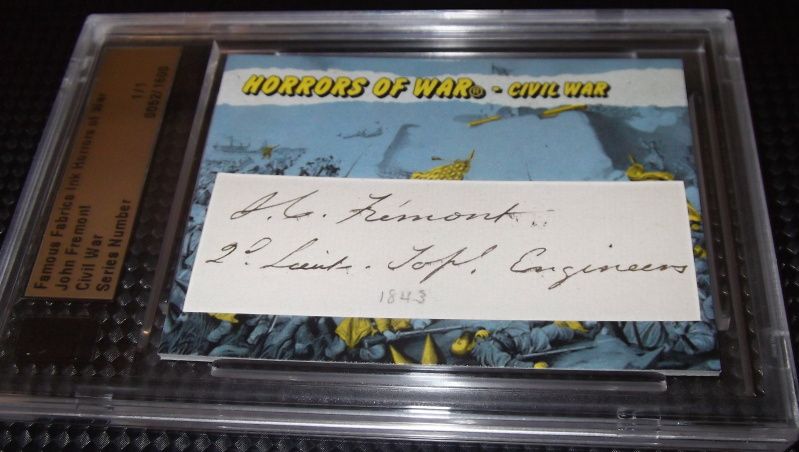 John Fremont 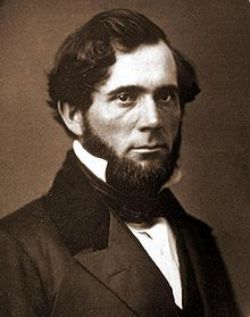 John Fremontwas born in Savanannah, Georgia, on 21st January, 1813. Educated at Charleston College, he taught mathematics before joining the Army Topographical Engineers Corps in 1838. The following year Fremont joined a party led by Joseph N. Nicollet, that surveyed and mapped the region between the upper Mississippi and Missouri rivers. Fremont surveyed the Des Moines River in 1841. Sponsored by the Missouri senator, Thomas Hart Benton, in 1842 Fremont mapped most of the Oregon Trail and climbed the second highest peak in the Wind River Mountains, afterwards known as Fremont Peak. In 1843, with Kit Carson and Tom Fitzpatrick as his guides, Fremont's party followed the Cache de la Poudre River into the Laramie Mountains. He then crossed the Rocky Mountains via the South Pass and Green River. He then followed the Bear River until it reached the Great Salt Lake. After spending time at Fort Hall he followed the Snake River past Fort Boise to Fort Vancouver, where he met John McLoughlin. Fremont then turned south where he explored Klamath Lake and the Great Basin before making a midwinter crossing of the Sierra Nevada mountains and despite great hardships reached Sutter Fort. Fremont eventually reached St. Louis on 6th August, 1844. Fremont made his third expedition in 1845 during which he explored the Great Basin and the Pacific coast. While this was taking place the Mexican War started. Fremont was given the rank of major in the United States Army and helped annex California. Commodore Robert Stockton appointed Fremont as governor of California. However, in 1847 Fremont clashed with General Stephen Kearny and as a result was arrested for mutiny and insubordination and was subsequently court-martialed. President James Polk intervened and Fremont was eventually released. In the winter of 1848 and 1849 Fremont led an expedition to locate passes for a proposed railway line from the upper Rio Grande to California. During the Californian Gold Rush gold was discovered on his estate and he became a multi-millionaire. In 1850 Fremont was elected as senator for California. A strong opponent of slavery, Fremont founder member of the Republican Party. In 1856 Fremont was chosen as its first presidential candidate and although the Democratic Party candidate, James Buchanan, won with 1,838,169 votes, he did well to obtained the support of 1,335,264 electors. When Abraham Lincoln was elected president in 1860, Fremont was expected to be appointed to the Cabinet. Lincoln was reluctant to do this and instead proposed that Fremont should be appointed minister of France. William H. Seward, Secretary of State, objected, claiming that as Fremont had been born in Georgia, he could not be trusted to remain loyal during a conflict with the South. On the outbreak of the American Civil War Fremont was appointed as a Major General in the Union Army and put in command of the newly created Western Department based in St. Louis. On 30th August, 1861, Freemont proclaimed that all slaves owned by Confederates in Missouri were free. Abraham Lincoln was furious when he heard the news as he feared that this action would force slave-owners in border states to join the Confederate forces. Lincoln asked Fremont to modify his order and free only slaves owned by Missourians actively working for the South. Fremont refused claiming that "it would imply that I myself thought it wrong and that I had acted without reflection which the gravity of the point demanded." Montgomery Blair, the Postmaster General,who had originally supported the appointment of Fremont, now urged Abraham Lincoln to sack him. Lincoln responded by sending Simon Cameron, Secretary of War, Congressman Elihu Washburne and General Lorenzo Thomas to investigate the situation in St. Louis. After they reported back to Lincoln he decided to relieve Fremont of his command. He was replaced by the conservative General Henry Halleck. Horace Greeley, editor of the New York Tribune, wrote an open letter to Abraham Lincoln defending Fremont and criticizing the president for failing to make slavery the dominant issue of the war and compromising moral principles for political motives. Lincoln famously replied: "My paramount object in this struggle is to save the Union, and is not either to save or destroy slavery. If I could save the Union without freeing any slave, I would do it; and if I could save it by freeing all the slaves, I would do it." Fremont was a popular figure with Radical Republications and in March, 1862, Abraham Lincoln agreed to appoint him as the commander of the newly established Mountain Department. However, Fremont was severely criticized for failing to deal with Thomas Stonewall Jackson during his Shenandoah Valley. On 26th June, Freemont's troops came under the command of General John Pope. Fremont refused to serve under Pope and spent the rest of the war in New York. In May, 1864 a convention of Radical Republications selected Fremont as their candidate for president. Fremont accepted the nomination and told the audience: "Today we have in this country the abuses of a military dictation without its unity of action and vigor of execution." The idea of a radical candidate standing in the election worried Abraham Lincoln and negotiations began to persuade him to change his mind. Fremont's price was the removal of his old enemy, Montgomery Blair, from the Cabinet. On 22nd September, 1864, Fremont withdrew from the contest. The following day, Lincoln sacked Blair and replaced him with the radical, William Dennison. After the American Civil War Fremont became involved in railroad financing and building. This was a failure and he lost the fortune that he made during the Californian Gold Rush. He returned to politics when he became governor of Arizona Territory (1873-83). Fremont wrote several books including several about his expeditions and his autobiography, Memories of My Life (1887). John Fremont died in New York City on July 13, 1890. Legacy: Plants Frémont collected a number of plants on his expeditions, including the first recorded discovery of the Single-leaf Pinyon by a European American. The genus of the California Flannelbush (Fremontodendron californicum) is named for him, as are the species names of many other plants, including the chaff bush eytelia (Amphipappus fremontii), Western rosinweed (Calycadenia fremontii), pincushion flower (Chaenactis fremontii), goosefoot (Chenopodium fremontii), silk tassel (Garrya fremontii), moss gentian (Gentiana fremontii), vernal pool goldfields (Lasthenia fremontii), tidytips (Layia fremontii), desert pepperweed (Lepidium fremontii), desert boxthorn (Lycium fremontii), barberry (Mahonia fremontii), bush mallow (Malacothamnus fremontii), monkeyflower (Mimulus fremontii), phacelia (Phacelia fremontii), desert combleaf (Polyctenium fremontii), cottonwood tree (Populus fremontii), desert apricot (Prunus fremontii), indigo bush (Psorothamnus fremontii), mountain ragwort (Senecio fremontii), yellowray gold (Syntrichopappus fremontii), and chaparral death camas (Toxicoscordion fremontii). The standard author abbreviation Frém. is used to indicate this individual as the author when citing a botanical name. Places Four US states named counties in his honor: Colorado, Idaho, Iowa and Wyoming. Several states also named cities, villages, and towns after him, such as California, Michigan, Nebraska, New Hampshire, Ohio, Utah, and Wisconsin. Likewise, Fremont Peak in the Wind River Mountains and Fremont Peak in San Benito County, California, are also named for the explorer. The Fremont River, a tributary of the Colorado River in southern Utah, was named after Frémont, as was Fremont Island in the Great Salt Lake. Archaeologists named the prehistoric Fremont culture after the river, as the first archaeological sites of the culture were discovered near its course. The Seattle neighborhood of Fremont is indirectly named for him, as it was named after the hometown of the early residents from Fremont Nebraska The city of Elizabeth, South Australia (now a part of the city of Playford) named a local park and high school Fremont in recognition of the sister city relationship it had with Fremont, California. The high school has since merged with Elizabeth High School, so the Pathfinder's legacy is carried by Fremont-Elizabeth City High School. The "largest and most expensive 'trophy'" in college football is a replica of a cannon "that accompanied Captain John C. Frémont on his expedition through Oregon, Nevada and California in 1843–44". The annual game between the University of Nevada, Reno and the University of Nevada, Las Vegas is for possession of the Fremont Cannon. A barbershop chorus in Fremont, Nebraska, is named The Fremont Pathfinders.The Fremont Pathfinders Artillery Battery is an American Civil War reenactment group from the same community. Fremont Street in Las Vegas, Nevada, is named in his honor, as are streets in Minneapolis, Minnesota; Kiel, Wisconsin; Manhattan, Kansas; Portland, Oregon; Grant City, Staten Island, New York; Tempe, Arizona; and Tucson, Arizona, as well as several cities in California: Fremont, Monterey, Seaside, Stockton, San Mateo, San Francisco, and Santa Clara. Portland, Oregon also has several other locations named after Frémont, such as Fremont Bridge. Other places named for him include John C. Fremont Senior High School in Los Angeles, Fremont High School in Plain City, Utah, and Fremont Senior High School in Oakland, and the John C. Fremont Branch Library located on Melrose Avenue in Los Angeles. Elementary schools in Glendale, California; Modesto, California; Long Beach, California; and Carson City, Nevada bear his name, as do junior high or middle schools in Mesa, Arizona; Pomona, California; Las Vegas, Nevada; Roseburg, Oregon; and Oxnard, California. Fremont High School in Sunnyvale, California, is named for the explorer and its annual yearbook is called The Pathfinder. In addition, the Fremont Hospital in Yuba City, California,and the John C. Fremont Hospital, in Mariposa, California, (where Frémont and his wife lived and prospered during the Gold Rush) are named for him. There is also a John C. Fremont Library in Florence, Colorado. The U.S. Army's (now inactive) 8th Infantry Division (Mechanized) is called the Pathfinder Division, after John Frémont. The gold arrow on the 8th ID crest is called the "Arrow of General Frémont." The 1983 historical novel Dream West by western writer David Nevin covers the life, loves and times of Frémont. The novel was later adapted into a television miniseries of the same name with Richard Chamberlain as Frémont. Genealogy Frémont's great-grandfather, Henry Whiting, was a half-brother of Catherine Whiting. She married John Washington, uncle of George Washington. 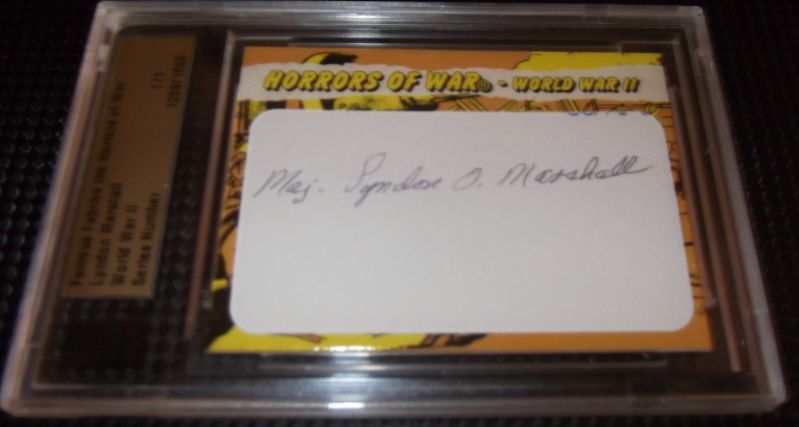 Lyndon Marshall 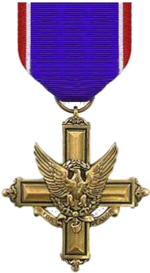 Distinguished Service Cross to Lyndon O. Marshall (0-793648), Captain (Air Corps), U.S. Army Air Forces, for extraordinary heroism in connection with military operations against an armed enemy while serving as Pilot of a P-40 Fighter Airplane in the 26th Fighter Squadron, 51st Fighter Group, FOURTEENTH Air Force, in aerial combat against enemy forces on 5 April 1944, in the China-Burma-India Theater of Operations. On that date, Captain Marshall shot down four enemy aircraft in a single engagement. Captain Marshall's unquestionable valor in aerial combat is in keeping with the highest traditions of the military service and reflects great credit upon himself, the 14th Air Force, and the United States Army Air Forces. 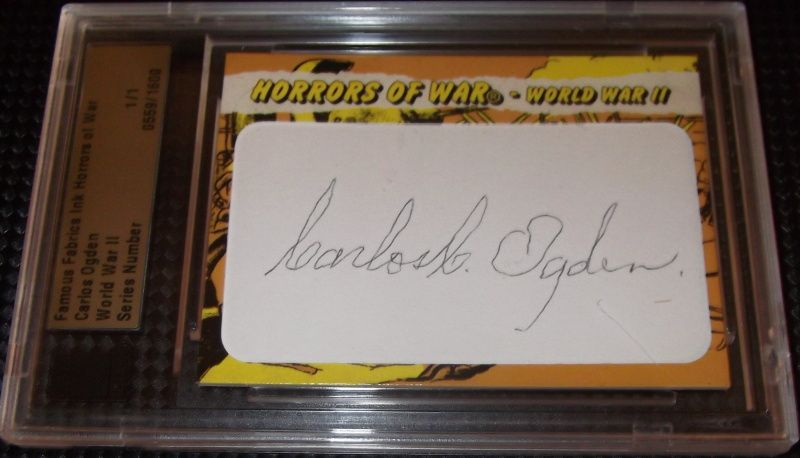 Carlos Ogden 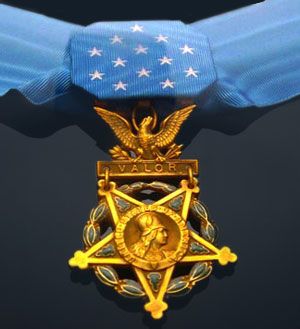 Carlos Carnes Ogden, Sr. (May 9, 1917 – April 2, 2001) was a United States Army officer and a recipient of the United States military's highest decoration — the Medal of Honor — for his actions in World War II. Ogden joined the Army from Fairmount, Illinois in April 1941,and by June 25, 1944 was serving as a First Lieutenant in Company K, 314th Infantry Regiment, 79th Infantry Division. During a firefight on that day, near Fort du Roule, France, Ogden single-handedly destroyed three German gun emplacements. For his actions, he was awarded the Medal of Honor one year later, on June 28, 1945. Ogden reached the rank of major before leaving the Army. He died at age 83 and was buried in Arlington National Cemetery, Arlington County, Virginia. Ogden's official Medal of Honor citation reads: On the morning of June 25, 1944, near Fort du Roule, guarding the approaches to Cherbourg, France, 1st Lt. Ogden's company was pinned down by fire from a German 88-mm. gun and 2 machineguns. Arming himself with an M-1 rifle, a grenade launcher, and a number of rifle and handgrenades, he left his company in position and advanced alone, under fire, up the slope toward the enemy emplacements. Struck on the head and knocked down by a glancing machinegun bullet, 1st Lt. Ogden, in spite of his painful wound and enemy fire from close range, continued up the hill. Reaching a vantage point, he silenced the 88mm. gun with a well-placed rifle grenade and then, with handgrenades, knocked out the 2 machineguns, again being painfully wounded. 1st Lt. Ogden's heroic leadership and indomitable courage in alone silencing these enemy weapons inspired his men to greater effort and cleared the way for the company to continue the advance and reach its objectives.  Russell Dunham 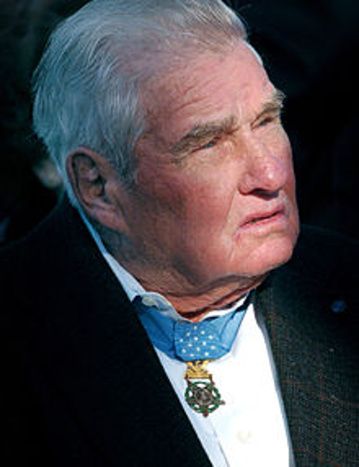 Dunham was a platoon leader in his unit. Dunham's unit became pinned down at the base of snow-covered Hill 616, a steep hill in Alsace-Lorraine near Kaysersberg, France on January 8, 1945. With machine gun fire coming down the hill in front of their unit, and a heavy artillery barrage landing behind them, Dunham decided "the only way to go was up".[5] Using a white mattress cover as a camouflage aid against the backdrop of the snow, Dunham began moving up the hill. He carried with him a dozen hand grenades and a dozen magazines for his M1 Carbine. Dunham began crawling more than 100 yards (91 m) to the first machine gun nest under fire from two machine guns and supporting riflemen. When10 yards (9 m) from the nest, he jumped up to assault the nest and was hit by a bullet which caused him to tumble 15 yards (14 m) downhill. He got back up and charged the nest firing his carbine as he went, and kicked aside an egg grenade that had landed at his feet. Prior to reaching the nest, he tossed a hand grenade into the nest. When he got to the nest, he killed the machine gunner and his assistant. His carbine then jammed, and he jumped into the machine gun emplacement. He threw a third German in the nest down the hill who was later captured by his unit. With his carbine jammed, he picked up another carbine from a wounded soldier and advanced on the second nest, 50 yards (46 m) away. As he came within25 yards (23 m) of the nest, he lobbed two hand grenades into the nest, wiping it out. He followed this up by firing down fox holes used in support of the nest. He then began his slow advance on the third nest, 65 yards (59 m) up the hill. He made his advance on the third nest under heavy automatic fire and grenades. As he came within 15 yards (14 m) of the nest, he tossed more grenades and wiped out the last nest, barely being missed at point blank range by a German rifleman. During the action, Dunham killed nine Germans, wounded seven and captured two on his own. Nearly 30 other Germans were captured as a result of his actions. When Dunham was presented with the Medal of Honor, General Alexander Patch said as he placed the award around Dunham's neck that his actions in single-handedly destroying the machine gun nests saved the lives of 120 U.S. soldiers who had been pinned down. For his injuries on that day, Dunham also received the Purple Heart. Shrapnel from his injuries remained in his body for the rest of his life, and Dunham was quoted as saying "The shrapnel in my leg is a reminder of the war we fought." Dunham returned to the front before his wounds healed. On January 22 his battalion was surrounded by tanks, forcing most of the men to surrender. The following morning, two German soldiers discovered Dunham hiding in a sauerkraut barrel outside a barn. When their search of his pockets turned up a pack of cigarettes, they fought over it, overlooking his pistol in a shoulder holster. Later that day as he was being transported toward German lines, the driver stopped in a bar, giving Dunham the opportunity to shoot his other captor in the head and set off toward the American lines. Dunham suffered severe frostbite while completing his escape. Citation: For conspicuous gallantry and intrepidity at risk of life above and beyond the call of duty. At about 1430 hours on 8 January 1945, during an attack on Hill 616, near Kayserberg, France, T/Sgt. Dunham single-handedly assaulted 3 enemy machine guns. Wearing a white robe made of a mattress cover, carrying 12 carbine magazines and with a dozen hand grenades snagged in his belt, suspenders, and buttonholes, T/Sgt. Dunham advanced in the attack up a snow-covered hill under fire from 2 machine guns and supporting riflemen. His platoon 35 yards behind him, T/Sgt. Dunham crawled 75 yards under heavy direct fire toward the timbered emplacement shielding the left machine gun. As he jumped to his feet 10 yards from the gun and charged forward, machine gun fire tore through his camouflage robe and a rifle bullet seared a 10-inch gash across his back sending him spinning 15 yards down hill into the snow. When the indomitable sergeant sprang to his feet to renew his 1-man assault, a German egg grenade landed beside him. He kicked it aside, and as it exploded 5 yards away, shot and killed the German machine gunner and assistant gunner. His carbine empty, he jumped into the emplacement and hauled out the third member of the gun crew by the collar. Although his back wound was causing him excruciating pain and blood was seeping through his white coat, T/Sgt. Dunham proceeded 50 yards through a storm of automatic and rifle fire to attack the second machine gun. Twenty-five yards from the emplacement he hurled 2 grenades, destroying the gun and its crew; then fired down into the supporting foxholes with his carbine dispatching and dispersing the enemy riflemen. Although his coat was so thoroughly blood-soaked that he was a conspicuous target against the white landscape, T/Sgt. Dunham again advanced ahead of his platoon in an assault on enemy positions farther up the hill. Coming under machinegun fire from 65 yards to his front, while rifle grenades exploded 10 yards from his position, he hit the ground and crawled forward. At 15 yards range, he jumped to his feet, staggered a few paces toward the timbered machinegun emplacement and killed the crew with hand grenades. An enemy rifleman fired at pointblank range, but missed him. After killing the rifleman, T/Sgt. Dunham drove others from their foxholes with grenades and carbine fire. Killing 9 Germans—wounding 7 and capturing 2—firing about 175 rounds of carbine ammunition, and expending 11 grenades, T/Sgt. Dunham, despite a painful wound, spearheaded a spectacular and successful diversionary attack. 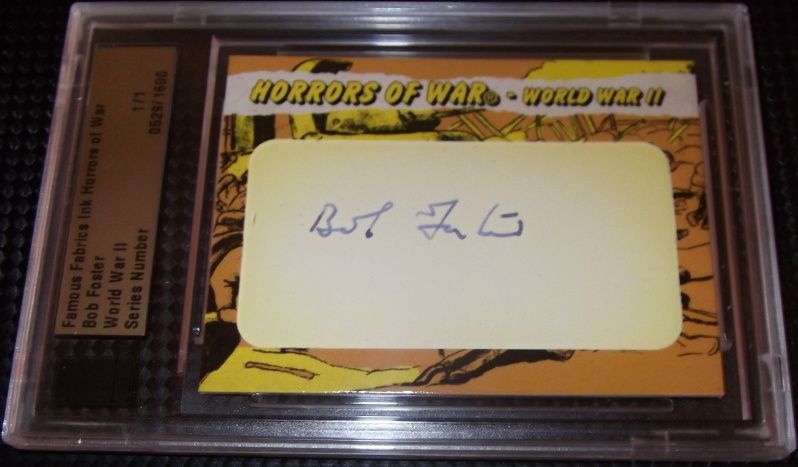 Bob Foster 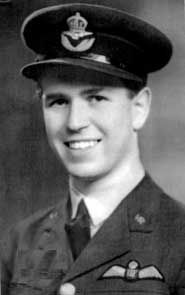 Bob Foster is a well known figure at book and print signings in many parts of the UK. Although recognised as a Battle of Britain veteran, little is known of his life, or the details of his war service with the RAF. Persuaded to tell his story to air historian and well established aviation author Norman Franks, the result of his book "Tally Ho!" from the Battle of Britain to the defence of Darwin. These years began shortly before WW2, when he learned to fly with the RAFVR. Called up for service in September 1939, he completed his training and was posted to 605 Squadron, equipped with Hawker Hurricanes. By early September 1940 he and his Squadron were in the thick of the air fighting over southern England, operating from Croydon. Surviving the Battle, he later became an instructor, but shortly after joining 54 Squadron, which had Spitfires, he and his unit became part of a group sent to Australia to help defend the Darwin area. Bob's squadron and two others, 452 and 457, engaged the Japanese incursions throughout 1943. Awarded the DFC for his efforts, he returned to the UK and was given an assignment with a RAF public relations outfit, ending up in Normandy within three weeks of the invasion of 1944. Often serving right up in the front lines, Bob saw war at a very close hand, and then quite by chance became one of the first, if not the first RAF officer to enter Paris with the liberating French army, and again by chance, was in General de Gaulle's triumphant procession down the Champs-Elysees. 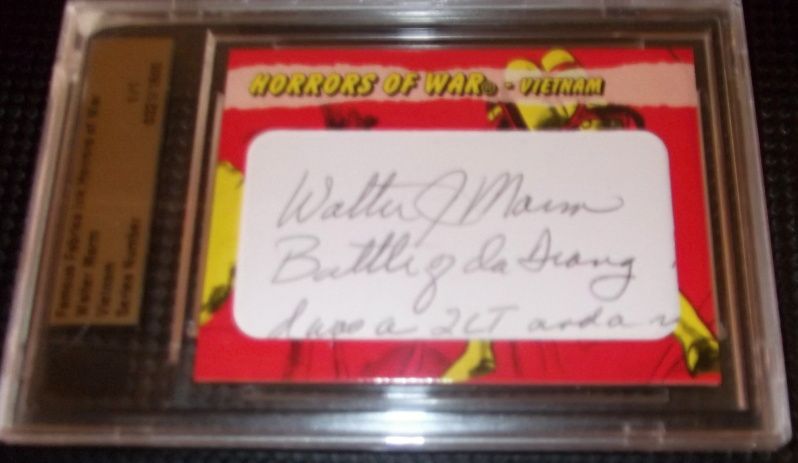 Walter Joseph Marm 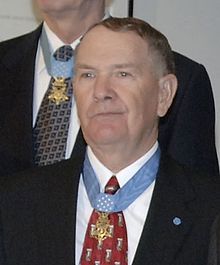 Marm joined the Army from Pittsburgh, Pennsylvania, and by November 14, 1965 was serving as a second lieutenant in Company A, 1st Battalion, 7th Cavalry Regiment, 1st Cavalry Division (Airmobile). On that day, during the Battle of Ia Drang, he single-handedly attacked an enemy position, suffering severe wounds in the process. Marm survived his wounds and was subsequently promoted to first lieutenant; on December 19, 1966, he was awarded the Medal of Honor for his actions. Marm reached the rank of colonel before retiring from the Army in 1995. Medal of Honor citation First Lieutenant Marm's official Medal of Honor citation reads: For conspicuous gallantry and intrepidity at the risk of life above and beyond the call of duty. As a platoon leader in the 1st Cavalry Division (Airmobile), 1st Lt. Marm demonstrated indomitable courage during a combat operation. His company was moving through the valley to relieve a friendly unit surrounded by an enemy force of estimated regimental size. 1st Lt. Marm led his platoon through withering fire until they were finally forced to take cover. Realizing that his platoon could not hold very long, and seeing four enemy soldiers moving into his position, he moved quickly under heavy fire and annihilated all 4. Then, seeing that his platoon was receiving intense fire from a concealed machine gun, he deliberately exposed himself to draw its fire. Thus locating its position, he attempted to destroy it with an antitank weapon. Although he inflicted casualties, the weapon did not silence the enemy fire. Quickly, disregarding the intense fire directed on him and his platoon, he charged 30 meters across open ground, and hurled grenades into the enemy position, killing some of the 8 insurgents manning it. Although severely wounded, when his grenades were expended, armed with only a rifle, he continued the momentum of his assault on the position and killed the remainder of the enemy. 1st Lt. Marm's selfless actions reduced the fire on his platoon, broke the enemy assault, and rallied his unit to continue toward the accomplishment of this mission. 1st Lt. Marm's gallantry on the battlefield and his extraordinary intrepidity at the risk of his life are in the highest traditions of the U.S. Army and reflect great credit upon himself and the Armed Forces of his country. | |||
|
| Member |
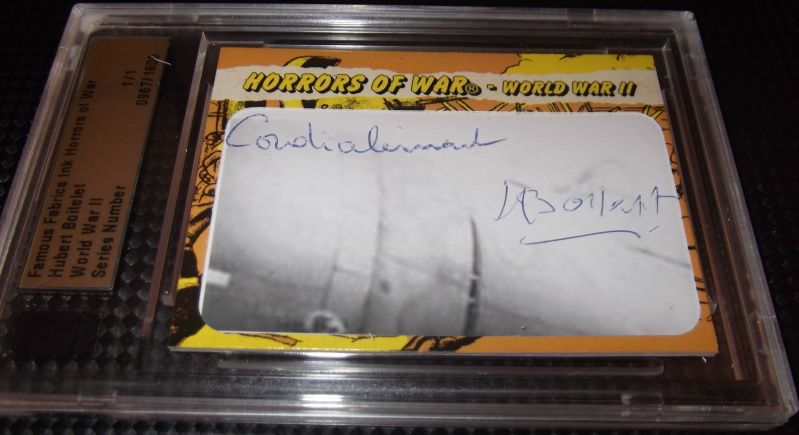 Hubert Boitelet 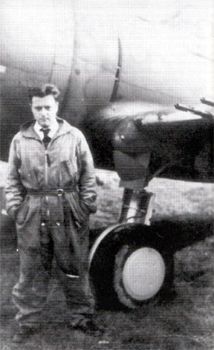 Hubert Boitelet born December 7, 1911 at Panderma, Turkey. Following in the footsteps of his father, an observer during the Great War, he entered the school Caudron Ambérieu-en-Bugey in 1931 and obtained his license in July 1931. Involved in the Air Force in November 1931, it goes through Istres before being assigned to the GC I / 5 and the GC II / 7 , Dijon, with the rank of sergeant. After successfully entered the military school in September 1937, he graduated a year later with stripes Lieutenant and assignment as chief of patrol GC I / 5 , in Reims. When World War II éclaote, Hubert Boitelet is Suippes, in the Second Squadron, equipped with Curtiss H-75. During the fall, he was promoted to Lieutenant. Pilot experience, especially in flight at low altitude, fighting the campaign of France are paradoxically often lead to high lead patrols, those charged with protecting reconnaissance aircraft during escort missions into German territory . During his first encounter with the enemy, September 30, 1939, Hubert Boitelet lack of winning his first success at the same time becoming one of the first victims of his unit. Responsible for portéger a Potez 637 GAR II/22 along with 8 other drivers (6 of GC I / 5 and 3 GC II / 5 ), the French aircraft are surprised by a group of Me 109. If the fight ended with two wins (WO Pierre Genty) for the French, they are not sufficient to compensate for the loss of Sergeant Lepreux and Lieutenant Le Restif, both killed. For its part, Boitelet Hubert , when he was about to shoot a German fighter passed him by is pick another Me 109 that pierces his Curtiss 45 impacts but lucky driver manages to regain its base after being confronted with the harsh realities of the air war. 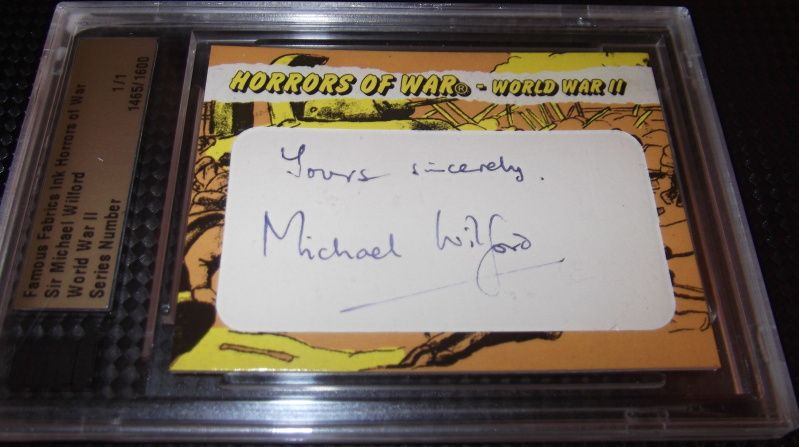 Sir Michael Wilford  The term of Sir Michael Wilford, who has died aged 84, as British ambassador to Japan, from 1975 to 1980, was marked by progress in the development of industrial relations and partnership between the two countries. A man of outstanding physical and mental agility, he admired the Japanese capacity for innovation, and did not care for the idea of post-industrial Britain. He fostered bilateral cooperation and inspired a keen embassy team. The fondness for golf of Japanese industrialists and politicians was an advantage: few ambassadors in Tokyo were summoned, as Wilford was from time to time, for a round with prime minister Masayoshi Ohira. His ability to get the best out of any situation - and to find enjoyment in doing so - endeared him to his staff, who respected his professional standards and conviction that life should be tackled with style and verve. Born in Wellington, New Zealand, where his family were long established, Wilford was taken to Shanghai, where his father was with BP, and then to a grandmother in Dublin, where his love of golf and cricket was fostered, together with his education at Castle Park. From there he went to Wrekin College, gaining distinction both in the classroom and on the playing field. He retained a lifelong interest in the school's success. At Pembroke College, Cambridge, he began reading mechanical sciences, until called up in 1940. He played for the university both at golf and cricket, and for a wartime army XI enriched by a number of England players. He joined the Royal Engineers, becoming a captain in the assault squadron that led the Guards Armoured Division on to Gold beach in Normandy on D-day. Much had been achieved before Wilford was evacuated for hospital treatment after being wounded by a mortar bomb. He recovered in time to take part in the landings on the Dutch island of Walcheren in November 1944, where he was again wounded, this time more seriously, and mentioned in dispatches. Michael rarely spoke of his wartime experiences, though he recalled his irritation when, lying disabled on a stretcher, he could not prevent someone from pinching his favourite boots, which had been attached by their laces to the stretcher pole. A most unusual wartime achievement was his liberation in person of some Wilfords living in Belgium. At the end of the war, he was an instructor at the School of Military Engineering, while returning to Cambridge to complete his degree. Regarded as unfit for further military service, he joined the (then) Foreign Service in 1947. His first posting was to the allied control commission in Berlin in 1947. Two years later, he was brought back to London for the first of an intermittent series of jobs in the private offices of five foreign secretaries. This was for Ernest Bevin, with whom he went on tour - and for whom his respect was lasting. Wilford served in Paris under ambassadors Sir Oliver Harvey and Sir Gladwyn Jebb from 1952 to 1955, during which time he and his family acquired a love of France, which they explored enthusiastically at every opportunity. In Singapore (1955-59), where the Malayan emergency and the establishment of the South-East Asia Treaty Organisation (Seato) were principal preoccupations for Commissioner-General Sir Rob Scott and his staff, Michael began to develop his interest in the wider subject of east Asian politics and economics. After a spell in foreign secretary Selwyn Lloyd's office (1959-60), he became private secretary to Edward Heath, then Lord Privy Seal, to support his work for entry to the EEC. As private secretary (as with his family when en poste) he always sought opportunities to travel, if possible adventurously; and he had been exceedingly lucky in 1961 during the difficulties in the Congo, when he and Lord Lansdowne had to withdraw from UN secretary general Dag Hammarskjold's plane just before its fatal flight, to draft an urgent telegram to London. His time with Heath was followed in 1962 by a posting to Rabat. In 1964, he became counsellor in Peking at the height of the Sino-Soviet rift and during the dark onset of the cultural revolution. During a visiting fellowship (1966-67) at All Souls College, Oxford, Wilford's capacity for enjoying life led him to find accommodation close to the Frilford Heath golf club. He returned to the far east briefly in 1967 as acting political adviser to the governor of Hong Kong before being posted to Washington (1967-69) as counsellor with special responsibilities for Asian affairs, at a critical time of the Vietnam war. Then, as assistant (and later deputy) under-secretary at the Foreign Office (1969-75), he supervised and advised ministers on work in half the world, including the far east and south-east Asia. His pursuit of industrial cooperation with Japan continued after retirement from government service in his work for Lloyds Bank and Barings in the City, and in his many other commitments, including those with the Japan Association, the 2000 Group, the Royal Society for Asian Affairs and the Japan Animal Welfare Society. At the same time, to the Sixteen choir and to the village fete committee at Abbotts Ann, Hampshire, he offered the same wholehearted support always given to his devoted wife and family. A man of unmistakable integrity, Wilford was also intensely practical and direct in his approach to complex issues, qualities which no doubt accounted for the unusual balance of his diplomatic career, with its emphasis on the quick and accurate management of business for ministers. He claimed that as an engineer he was the only person in the service who knew that water did not flow uphill. He never imposed his views without having listened to the opinions of others. Brisk, even sharp, he was never in the least arrogant. His strong sense of duty was essentially a down-to-earth, and even a humble quality. Wilford's love of life, of people and places, and his generosity and hospitality, were all shared with his wife and family. They came equal first, with his country, in his profoundly humane spirit of service. His wedding in 1944 with Joan Law, then a WRNS wireless operator, was skilfully arranged in a brief interval during preparations for D-day. 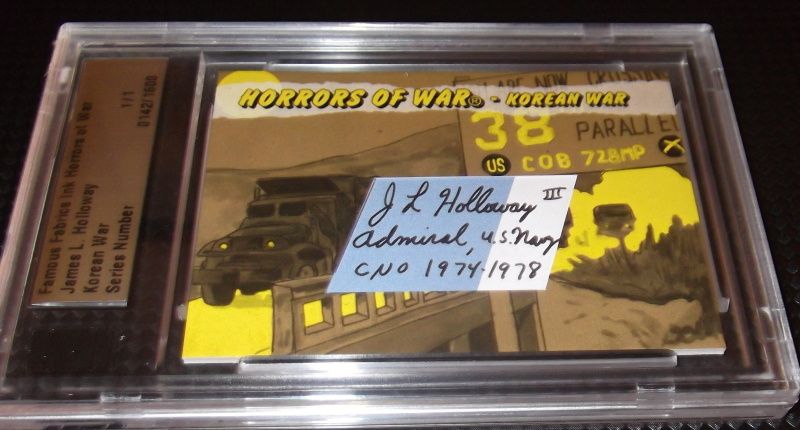 James L. Holloway III 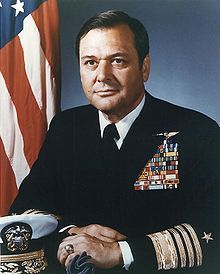 James Lemuel Holloway III (born February 23, 1922) is a retired United States Navy admiral and naval aviator who was highly decorated for his actions during World War II, the Korean War, and the Vietnam War. After the Vietnam War, he was posted to The Pentagon, where he established the Navy's Nuclear Powered Carrier Program. He served as Chief of Naval Operations from 1974–1978. After retiring from the Navy, Holloway served as President of the Naval Historical Foundation from 1980–1998 and served another ten years as its Chairman until his retirement in 2008. He is presently Chairman Emeritus of the Naval Historical Foundation and author of Aircraft Carriers at War: A Personal Retrospective of Korea, Vietnam, and the Soviet Confrontation published in 2007 by the Naval Institute Press. Naval career In that war, he served in destroyers on North Atlantic convoy duty, in North African waters and in the Pacific where he participated in the Saipan, Tinian, and Palaus campaigns and the Battle of Leyte Gulf. He was gunnery officer of the destroyer Bennion which at the Battle of Surigao Strait took part in a night torpedo attack which sank the Japanese battleship Yamashiro, assisted in the destruction of the destroyer Asagumo, attacked the cruiser Mogami with torpedoes, and then the following day shot down two Japanese Zeroes at short range. For this service, he received the Bronze Star and Navy Commendation Medals. After World War II, he became a naval aviator. He made two carrier tours to Korea, flying Grumman F9F-2 Panther jets on combat missions against the North Korean and Chinese Communists. He assumed command of Fighting Squadron 52 (VF-52) when his commanding officer was shot down. He was awarded the Distinguished Flying Cross and three Air Medals during the Korean War, and shared in a Navy Unit Commendation awarded to the aircraft carrier Valley Forge. Cmdr Holloway, commanding officer, VA-83. In 1958, as Commanding Officer of Attack Squadron 83 (VA-83), flying Douglas A-4 Skyhawks from the carrier Essex, he covered the Marine landings in Lebanon and flew patrols in support of U.S. operations there until Essex was redeployed through the Suez Canal to join the 7th Fleet in the Formosa Straits. There, he flew missions in defense of Quemoy and Matsu against the threat of a Chinese Communist invasion of those offshore islands. From 1965-1967, he commanded the carrier Enterprise, the Navy's first, and at that time, only nuclear-powered aircraft carrier for two combat cruises in the Gulf of Tonkin against the North Vietnamese. Enterprise established a record for the number of combat sorties flown, won the Battle Efficiency “E” award for the best carrier in the fleet, and was awarded a Navy Unit Commendation. He twice received the Legion of Merit for his leadership. Returning to the Pentagon, in 1968 he established the Navy's Nuclear Powered Carrier Program, building the supercarrier Nimitz and paving the way for nine more supercarriers of this class. He was awarded the Navy's Distinguished Service Medal for this achievement. In 1970, he was Commander of the Carrier Striking Force of the 6th Fleet and deployed to the Eastern Mediterranean to conduct carrier air operations in reaction to the Syrian invasion of Jordan. After the strong U.S. military response brought about the withdrawal of the Syrian forces, his task force covered the evacuation of an Army MASH (Mobile Army Surgical Hospital) unit from Amman, Jordan, by a Marine Expeditionary Group. For his performance of duty he was awarded a second Distinguished Service Medal and shared in a Meritorious Unit Commendation awarded to his flagship, the carrier Independence. He took command of the 7th Fleet in 1972 during the Vietnam War, and personally led a cruiser-destroyer gunfire strike force during the Battle of Haiphong Harbor. During Operation Linebacker II, he directed the massive carrier strikes against Hanoi which were a part of the intensive joint air effort which led to the Vietnam cease-fire in 1973. Under his command, the 7th Fleet subsequently performed the airborne mine clearing operations in North Vietnam ports in accordance with the terms of the Paris Peace Accords. For duty as Commander, 7th Fleet, he received a third Distinguished Service Medal. He then served as Vice Chief of Naval Operations (VCNO) from 1973-1974. Adm. James L. Holloway, Jr., (left) with his son, Adm. J.L. Holloway, III, CNO, in 1974. As Chief of Naval Operations (CNO) from 1974–1978, he was a member of the Joint Chiefs of Staff (JCS), and served as Chairman of the JCS during the evacuation of Cyprus; the rescue of the merchant ship SS Mayaguez and its crew, and punitive strike operations against the Cambodian forces involved in its seizure; the evacuation of U.S. nationals from Lebanon; and the Korean DMZ (demilitarized zone) incident in August 1976, which led to an ultimatum and an armed standoff between the Allied and North Korean armies before the North Koreans backed down. For this service, he was presented a fourth Navy Distinguished Service Medal and two awards of the Defense Distinguished Service Medal. Post-Navy career After retiring from the Navy in 1978, Holloway was a consultant to Paine Webber, Inc. and served until 1988 as President of the Council of American-Flag Ship Operators, a national association of U.S. merchant marine companies. In 1980, he chaired the Special Operations Review Group which investigated the aborted Iranian hostage rescue attempt. In 1985, he served as Executive Director of Vice President Bush's Task Force on Combating Terrorism, and was a member of the President's Blue Ribbon Commission on Defense Management. In 1986, he was appointed as a Special Envoy of the Vice President to the Middle East. Later, he was a member of the Commission on Merchant Marine and Defense and the Defense Commission on Long Term Integrated Strategy. In 1985, Holloway was the Technical Advisor to the film Top Gun. Subsequently, he has been Chairman of the Academic Advisory Board of the US Naval Academy, Chairman of the Association of Naval Aviation, a Director of the Olmsted Foundation, a Trustee of the George C. Marshall Foundation, served on the Board of Visitors and Governors of St. John’s College and served in a Presidential appointment as US Representative to the South Pacific Commission. In 1994, he received the triennial Modern Patriot Award from the General Society of the Sons of the American Revolution, and in 1997 the National Navy League Award for Outstanding Civilian Leadership. In 1998, he was elected to the National Amateur Wrestling Hall of Fame. In 2000, he was selected by the US Naval Academy Alumni Association to receive the Distinguished Graduate Award for service to the Navy and the Naval Academy. He was enshrined in the National Museum of Naval Aviation’s Hall of Honor in 2004. Holloway has been conspicuous in his personal support for the Navy's official history programs run by the Naval History & Heritage Command. His generous grant made the Online Dictionary of American Naval Fighting Ships Project possible, thereby opening one of the most important US naval history resources to a world wide audience. Currently, he is Chairman Emeritus of the Naval Historical Foundation and the Historic Annapolis Foundation, the Board of Trustees of Saint James School, and as an Emeritus member of the Board of the Mariners' Museum. He is a member of the Society of the Cincinnati, the Brook Club (New York City), Maryland Club (Baltimore, Maryland), New York Yacht Club, Annapolis Yacht Club, and the Metropolitan Club of Washington, D.C., where he served as President in 1992. Among his more than forty military decorations and medals, he holds two awards of the Defense Distinguished Service Medal, four Navy Distinguished Service Medals, two Legions of Merit, the Distinguished Flying Cross, the Bronze Star with Combat "V" device, the Navy Commendation Medal with Combat "V" device, three Air Medals, the French Legion of Honor, the German Grand Cross of the Order of Merit, and the Japanese Order of the Rising Sun.  Stephen Bonner 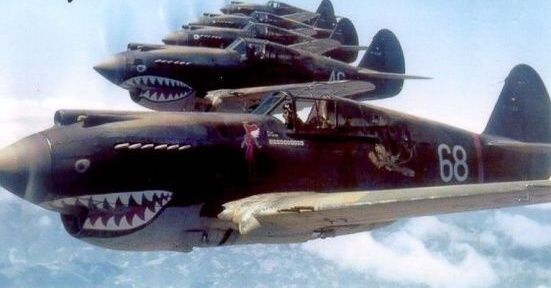 "This reunion is to remember those who are fallen and can't join us," said retired Col. Steve Bonner a member of the Flying Tigers. "It's important to remember the history and the sacrifices that all these members made." Mr. Bonner was a pilot during World War II and flew the P-40 over China from 1943 to 1944. The history of the Flying Tigers dates back to 1939 when the American Volunteer Group, commanded by U.S. Army Air Corps Lt. Gen. Claire Lee Chennault, the AVG disbanded and passed on their legacy and continued to fly as the 23rd Fighter Group. The group was nicknamed the "Flying Tigers" and became famous for the shark teeth painted on the P-40, which were thought to intimidate enemies. After World War II, the Flying Tigers were inactivated and reactivated several times, flying different fighter aircraft at different locations before being reactivated as the 23rd Wing. 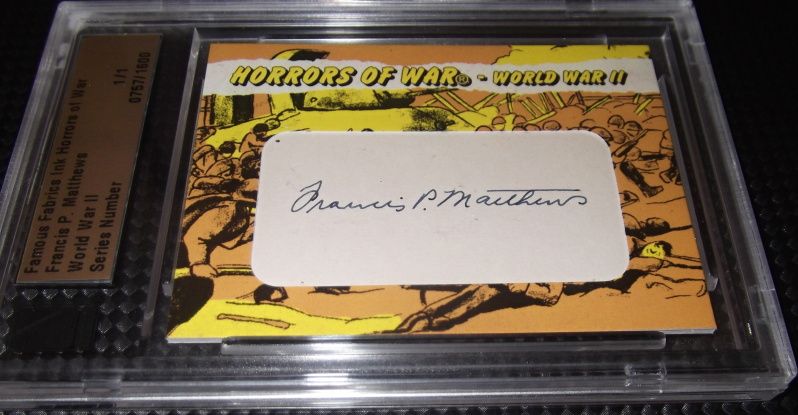 Francis P. Matthews 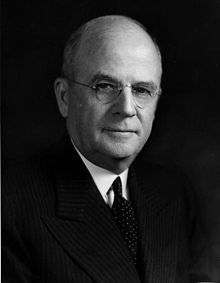 Francis Patrick Matthews (March 15, 1887–October 18, 1952) served as 49th United States Secretary of the Navy, during the administration of President Harry Truman. Matthews served during most of Truman's second term, from May 25, 1949 to July 31, 1951. He was also the Supreme Knight of the Knights of Columbus from 1939 to 1945. Born in Albion, Nebraska, Matthews spent most of his adult life in Omaha. He graduated from Creighton University in Omaha in 1913, then practiced law in that city from that time onward. He was active in business pursuits, civic and religious affairs and Democratic Party politics. From 1933 through 1949, he served as a consultant to the Reconstruction Finance Corporation. During the Second World War, Mr. Matthews served as a Director and Vice President of the United Service Organizations (USO) and was also involved in war-relief work. He was Director (1941–1951) of the Department of Finance in the U.S. Chamber of Commerce. Following the war, he served briefly (1946–1947) on the President's Committee on Civil Rights. Truman tapped Matthews in early 1949 to become Secretary of the Navy. Matthews entered the post in May 1949, at a time of internal turmoil in the Department of Defense resulting from significant funding reductions and controversial decisions on defense priorities. He served through the first year of the Korean War; during his two years in office, the federal government was massively increasing defense spending to meet international crises, and all the armed forces were under major strain as they simultaneously tried to meet the demands of a hot war in Asia and an intensive defense build-up in Europe. One of the key events of Matthews' time at the Navy Department was the so-called "Revolt of the Admirals," an intense controversy between the Navy and the Air Force over which service would be in charge of strategic bombing and the dropping of nuclear weapons. The Navy wanted to build huge flush-deck carriers (known as "supercarriers"), while the Air Force wanted to focus on the Convair B-36 bomber. Top Navy leaders "revolted" when they publicly expressed their dissatisfaction with the Defense Dept.'s policies, and several senior admirals (including ADM Louis E. Denfeld, Chief of Naval Operations) were forced to resign, or did so in protest. Matthews resigned the Navy post in July 1951 to become Ambassador to Ireland, the home of his ancestors. He died on October 18, 1952, during a visit to Omaha.  Felton Outland 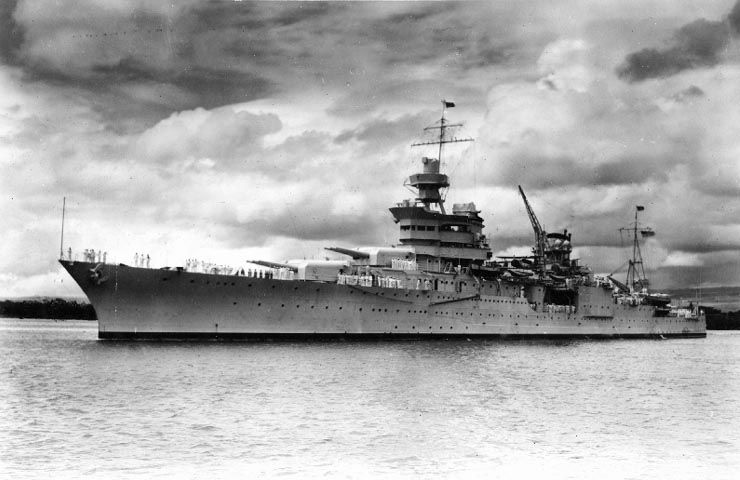 Felton Outland is a survivor of the USS Indianapolis (CA-35) Overhauled, Indianapolis joined Vice Admiral Marc A. Mitscher's fast carrier task force on 14 February 1945. Two days later, the task force launched an attack on Tokyo to cover the landings on Iwo Jima, scheduled for 19 February. This was the first carrier attack on Japan since the Doolittle Raid. The mission was to destroy Japanese air facilities and other installations in the "Home Islands". The fleet achieved complete tactical surprise by approaching the Japanese coast under cover of bad weather. The attacks were pressed home for two days. The American Navy lost 49 carrier planes while shooting down or destroying 499 enemy planes, a 10:1 kill/loss ratio. The task force also sank a carrier, nine coastal ships, a destroyer, two destroyer escorts, and a cargo ship. They destroyed hangars, shops, aircraft installations, factories, and other industrial targets. Indianapolis off Mare Island, on July 10, 1945. Immediately after the strikes, the task force raced to Bonin to support the landings on Iwo Jima. The ship remained there until 1 March, protecting the invasion ships and bombarding targets in support of the landings. Indianapolis returned to Admiral Mitscher's task force in time to strike Tokyo again on 25 February and Hachijō off the southern coast of Honshū the following day. Although weather was extremely bad, the American force destroyed 158 planes and sank five small ships while pounding ground installations and destroying trains. The next target for the U.S. forces was Okinawa in the Ryukyu Islands, which were in range of aircraft from the Japanese mainland. The fast carrier force was tasked with attacking airfields in southern Japan until they were incapable of launching effective airborne opposition to the impending invasion. The fast carrier force departed for Japan from Ulithi on 14 March. On 18 March, it launched an attack from a position 100 mi (160 km) southeast of the island of Kyūshū. The attack targeted airfields on Kyūshū as well as ships of the Japanese fleet in the harbors of Kobe and Kure on southern Honshū. The Japanese located the American task force on 21 March, sending 48 planes to attack the ships. Twenty-four fighters from the task force intercepted and shot down all the Japanese aircraft. Pre-invasion bombardment of Okinawa began on 24 March. Indianapolis spent 7 days pouring 8 in (200 mm) shells into the beach defenses. During this time, enemy aircraft repeatedly attacked the American ships. Indianapolis shot down six planes and damaged two others. On 31 March, the ship's lookouts spotted a Japanese fighter as it emerged from the morning twilight and roared at the bridge in a vertical dive. The ship's 20 mm guns opened fire, but within 15 seconds, the plane was over the ship. Tracers converged on it, causing it to swerve, but the enemy pilot managed to release his bomb from a height of 25 ft (7.6 m), crashing his plane into the sea near the port stern. The bomb plummeted through the deck, into the crew's mess hall, down through the berthing compartment, and through the fuel tanks before crashing through the keel and exploding in the water underneath. The concussion blew two gaping holes in the keel which flooded nearby compartments, killing nine crewmen. The ship's bulkheads prevented any progressive flooding. The Indianapolis, settling slightly by the stern and listing to port, steamed to a salvage ship for emergency repairs. Here, inspection revealed that her propeller shafts were damaged, her fuel tanks ruptured, and her water-distilling equipment ruined. But the Indianapolis commenced the long trip across the Pacific to Mare Island under her own power. Loss After major repairs and an overhaul, Indianapolis received orders to proceed to Tinian island, carrying parts and the enriched uranium (about half of the world's supply of Uranium-235 at the time) for the atomic bomb Little Boy, which would later be dropped on Hiroshima.Indianapolis departed San Francisco on 16 July. Arriving at Pearl Harbor on 19 July, she raced on unaccompanied, reaching Tinian on 26 July. Indianapolis was then sent to Guam where a number of the crew who had completed their tours of duty were replaced by other sailors. Leaving Guam on 28 July, she began sailing toward Leyte where her crew was to receive training before continuing on to Okinawa to join Vice Admiral Jesse B. Oldendorf's Task Force 95. At 00:14 on 30 July, she was struck by two Type 95 torpedoes on her starboard bow, from the Japanese submarine I-58 under the command of Mochitsura Hashimoto. The explosions caused massive damage. The Indianapolis took on a heavy list, and settled by the head. Twelve minutes later, she rolled completely over, then her stern rose into the air, and down she plunged. About 300 of the 1,196 men on board died in the sinking. The rest of the crew, 880 men, with few lifeboats and many without lifejackets, floated in the water awaiting rescue. Indianapolis's intended route from Guam to the Philippines However, the Navy command had no knowledge of the sinking (the ship's failure to arrive at her destination went unnoticed) until survivors were spotted three and a half days later, at 10:25 on 2 August by pilot Lieutenant Wilbur (Chuck) Gwinn and copilot Lieutenant Warren Colwell on a routine patrol flight. Only 321 sailors came out of the water alive; 317 ultimately survived. They suffered from lack of food and water (some found rations such as Spam and crackers amongst the debris), exposure to the elements (hypothermia, dehydration, hypernatremia, photophobia, starvation and dementia), severe desquamation, and shark attacks, while some killed themselves and/or one another in various states of delirium and hallucinations. The Discovery Channel stated in Shark Week episodes "Ocean of Fear" that the Indianapolis sinking resulted in the most shark attacks on humans in history, and attributes the attacks to the oceanic whitetip shark species. Tiger sharks might have also killed some of the survivors. The same show attributed most of the deaths on Indianapolis to exposure, salt poisoning and thirst, with the dead being dragged off by sharks. Gwinn immediately dropped a life raft and a radio transmitter. All air and surface units capable of rescue operations were dispatched to the scene at once. A PBY Catalina seaplane under the command of Lieutenant R. Adrian Marks was dispatched to lend assistance and report.[6] En route to the scene, Marks overflew Cecil J. Doyle and alerted her captain, future U.S. Secretary of the Navy W. Graham Claytor, Jr., of the emergency. On his own authority, Claytor decided to divert to the scene. Arriving hours ahead of Doyle, Marks' crew began dropping rubber rafts and supplies. Having seen men being attacked by sharks, Marks disobeyed standing orders and landed on the open sea. He began taxiing to pick up the stragglers and lone swimmers who were at the greatest risk of shark attack. Learning the men were the crew of Indianapolis, he radioed the news, requesting immediate assistance. Doyle responded while en route. When Marks' plane was full, survivors were tied to the wings with parachute cord, damaging the wings so that the plane would never fly again and had to be sunk. Marks and his crew rescued 56 men that day. The Doyle was the first vessel on the scene. Homing on Marks's Catalina in total darkness, Doyle halted to avoid killing or further injuring survivors, and began taking Marks' survivors aboard. Disregarding the safety of his own vessel, Captain Claytor pointed his largest searchlight into the night sky to serve as a beacon for other rescue vessels. This beacon was the first indication to most survivors that rescuers had arrived. The Helm, Madison, and Ralph Talbot were ordered to the rescue scene from Ulithi, along with Dufilho, Bassett, and Ringness from the Philippine Sea Frontier. They searched thoroughly for any survivors until 8 August.  Kurt Prinz 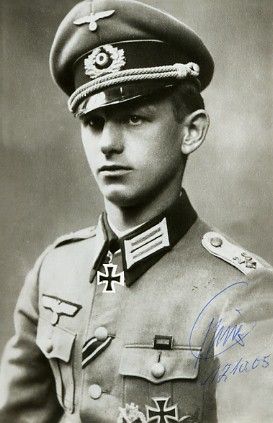 Kurt Prinz (3 April 1920 – 7 April 2009) was a highly decorated Major der Reserve in the Wehrmacht during World War II and a recipient of the Knight's Cross of the Iron Cross. The Knight's Cross of the Iron Cross was awarded to recognise extreme battlefield bravery or successful military leadership. Kurt Prinz was captured by American troops in May 1945 in the Ruhr Pocket. In 1946 he was handed over to Soviet forces and held until 1949. 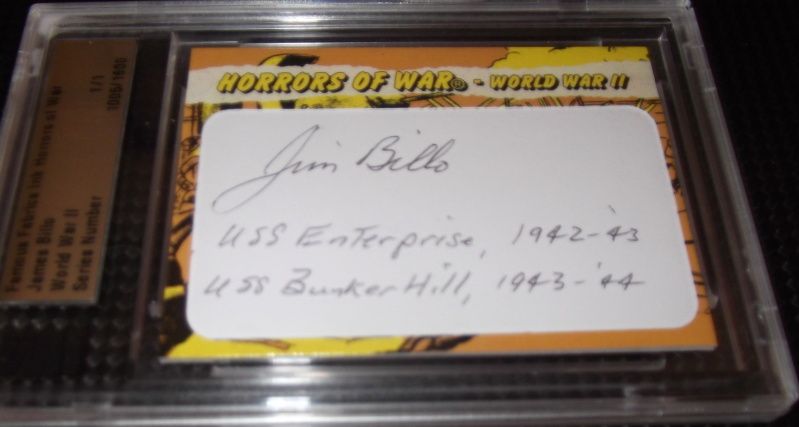 James Billo 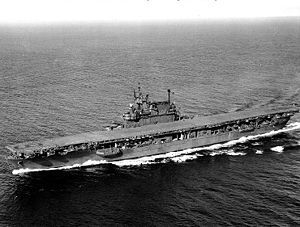 James Billo Ace Pilot 5 Victories USS Enterprise (CV-6), colloquially referred to as the "Big E," was the sixth aircraft carrier of the United States Navy and the seventh U.S. Navy ship to bear the name. Launched in 1936, she was a ship of the Yorktown class, and one of only three American carriers commissioned prior to World War II to survive the war (the others being Saratoga and Ranger). She participated in more major actions of the war against Japan than did any other US ship. These actions included the Battle of Midway, the Battle of the Eastern Solomons, the Battle of the Santa Cruz Islands, various other air-sea engagements during the Guadalcanal campaign, the Battle of the Philippine Sea, and the Battle of Leyte Gulf. On three separate occasions during the Pacific War, the Japanese announced that she had been sunk in battle, earning her the name "The Grey Ghost". Enterprise earned 20 battle stars, the most for any U.S. warship in World War II. Some have labeled her the most glorious and honored ship in the history of the United States Navy, rivaled only perhaps by the 18th century frigate USS Constitution. 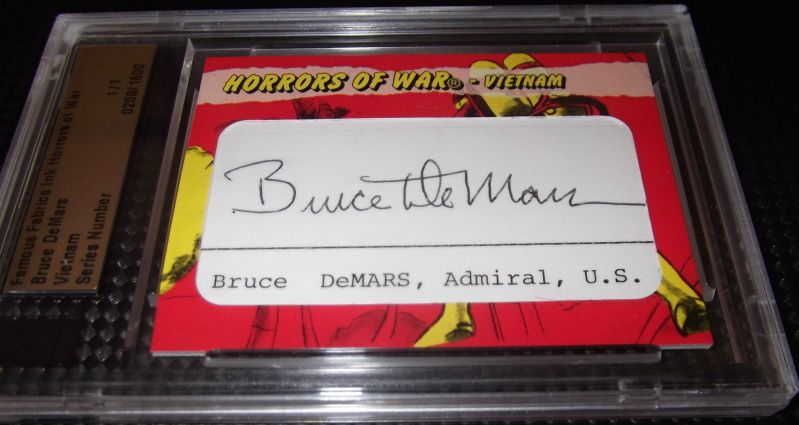 Bruce DeMars 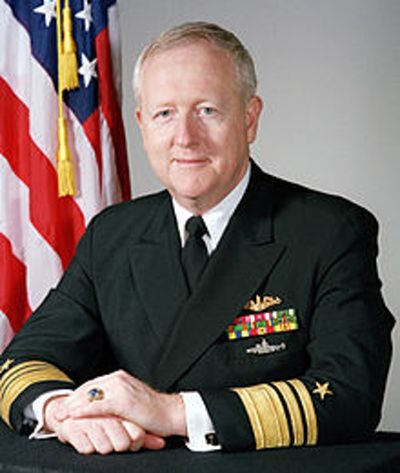 Bruce DeMars is a retired United States Navy four star admiral who served as Director, Naval Nuclear Propulsion from 1988 to 1996. Naval service After graduation, he initially served aboard the surface ships USS Telfair (APA-210) and USS Okanogan (APA-220) before attending Submarine School. Submarine service His first submarine assignment was the diesel USS Capitaine (SS-336). He underwent nuclear power training, followed by assignment to the nuclear-powered submarines USS George Washington (SSBN-598), USS Snook (SSN-592), and USS Sturgeon (SSN-637) before taking command of USS Cavalla (SSN-684). His shore duty stations include being an instructor at the Nuclear Power School and Submarine School and attending the Armed Forces Staff College. After staff duty with Squadron Ten, DeMars served as Senior Member of the Nuclear Propulsion Examining Board, United States Atlantic Fleet. He commanded Submarine Development Squadron Twelve in New London, Connecticut and then served as Deputy Director, Attack Submarine Division in the Office of the Chief of Naval Operations, until selected for promotion to Rear Admiral in 1981. Flag assignments His flag assignments include Commander, U.S. Naval Forces Marianas/Commander, U.S. Naval Base, Guam; Commander in Chief, Pacific Representative for Guam and the Trust Territory of the Pacific Islands; and Deputy Assistant Chief and then Deputy Chief of Naval Operations for Submarine Warfare. He was confirmed by the United States Senate on September 30, 1988 for promotion to full admiral and on October 22, 1988, he relieved Admiral Kinnaird R. McKee as Director, Naval Nuclear Propulsion. 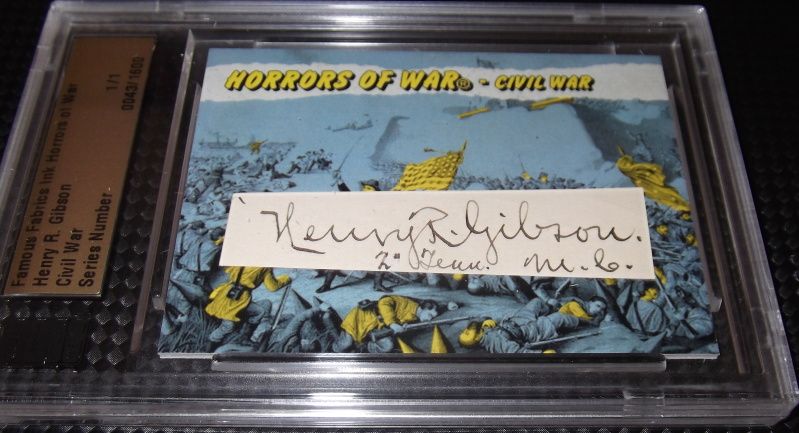 Henry R. Gibson  Henry Richard Gibson (December 24, 1837 – May 25, 1938) was an American politician and a member of the United States House of Representatives for the 2nd congressional district of Tennessee. Biography He was born on Kent Island, Maryland in Queen Anne's County. He attended the common schools at Kent Island and at Bladensburg, Maryland. He graduated from Decker's Academy at Bladensburg in 1858 and from Hobart College at Geneva, New York in 1862. He served in the commissary department of the Union Army from March 1863 to July 1865. He entered Albany Law School in New York in September 1865. He was admitted to the bar in December 1865 and commenced practice in Knoxville, Tennessee in January 1866. Henry Gibson moved to Jacksboro, Tennessee in Campbell County in October 1866. He was appointed commissioner of claims by Governor William G. Brownlow in 1868. He was a delegate to the state constitutional convention in 1870. He was a member of the Tennessee Senate from 1871 to 1875 and a member of the Tennessee House of Representatives from 1875 to 1877. He returned to Knoxville in 1876. He founded the Knoxville Republican in 1879 and became its editor. In 1881, he was appointed post office inspector, and in 1882 he became the editor of the Knoxville Daily Chronicle. He was appointed United States pension agent at Knoxville on June 22, 1883 and served until June 9, 1885. From 1886 to 1894, he was chancellor of the second chancery division of Tennessee. He was a professor of medical jurisprudence in the Tennessee Medical College from 1889 to 1906. In 1891, he was the author of Gibson’s Suits in Chancery. He was elected as a Republican to the Fifty-fourth and the four succeeding Congresses. He served from March 4, 1895 to March 3, 1905, but he declined to be a candidate for renomination in 1904. He was an associate editor in 1896 and an associate reviser in 1918 of the Code of Tennessee. Gibson retired from public life and resided in Washington, D.C., being engaged as a writer, as an author, and as a consulting editor of the American and English Encyclopedia of Law and Practice. He died on May 25, 1938, aged 100, in Washington, D.C. The remains were cremated and the ashes deposited in the Old Gray Cemetery at Knoxville, Tennessee. | |||
|
| Member |
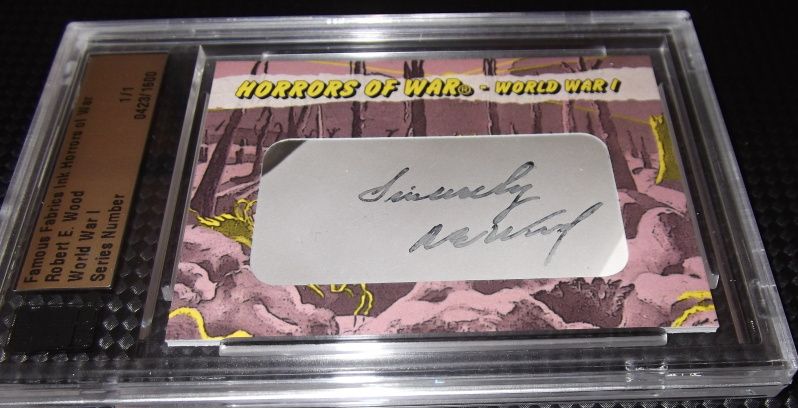 Robert E. Wood 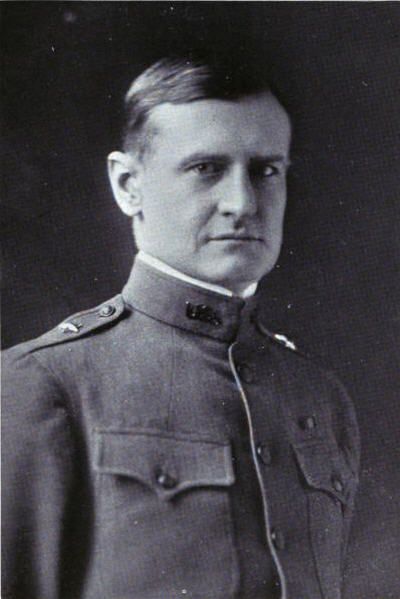 Robert Elkington Wood (June 13, 1879 – November 6, 1969) was a U.S. Army Brigadier General and businessman best known for his leadership of Sears, Roebuck and Company. Early life He was born in Kansas City, Missouri and attended the United States Military Academy at West Point, graduating in 1900 as a Second Lieutenant of Cavalry. Military career As an officer in the United States Army, he was stationed in the Philippines participating in field service during the Philippine insurrection. From 1902 to 1903 he was assigned to Fort Assiniboin, Montana and then for three years as an instructor at West Point. In 1905 he became the Assistant Chief Quartermaster and later the Chief Quartermaster and Director of the Panama Railroad Company. He served in the Panama Canal Zone for ten years, during the construction of the canal. Wood retired in July 1915, by special act of Congress as a Major. Following this retirement he worked as assistant to the vice president of the E. I. du Pont de Nemours Company and headed operations in the United States, Venezuela, and Trinidad for the General Asphalt Company.He briefly served as Purchasing Agent of the Emergency Fleet Corporation in early 1917. In 1917, on the eve of America's entry into the First World War he returned to the Army as an Infantry Lieutenant Colonel. He served in Europe with the 42nd (Rainbow) Division and was promoted to Colonel. Toward the end of the war, he was promoted to brigadier general and made acting Quartermaster General of the Army. Post military career After the leaving the army again in 1919, Wood became an executive at Montgomery Ward, eventually becoming a vice-president of the company. In 1924, he left Montgomery Ward to take a position of vice-president of Sears Roebuck. He became one of the most important leaders in that company's history, serving as vice-president from 1928 until 1939 and as chairman from 1939 until 1954. Under his leadership, Sears shifted the focus of its operations from mail-order sales to retail sales at large urban department stores. Wood also created Allstate Insurance as a subsidiary of Sears. Wood, once again, served as an honorary chairman for Sears from 1968 until shortly before his death in 1969, leaving a good portion of his stocks to family members. Political life Wood was also politically active and was noted as a conservative Republican. In 1940, he helped found the America First Committee to oppose U.S. involvement in the Second World War; he served as the committee's first president on an interim basis. In 1954, Wood funded the creation of the Manion Forum, a conservative radio program hosted by Clarence Manion. Decorations and honors Distinguished Service Medal (Army), United States Knight of the Legion of Honor, France Companion Order of St Michael and St George, Great Britain Bronze busts honoring Wood and seven other industry magnates stand between the Chicago River and the Merchandise Mart in downtown Chicago, Illinois. General Wood also has a Boys and Girls Club in Chicago named in his honor. Gen. Wood was inducted into the Junior Achievement U.S. Business Hall of Fame in 1979. 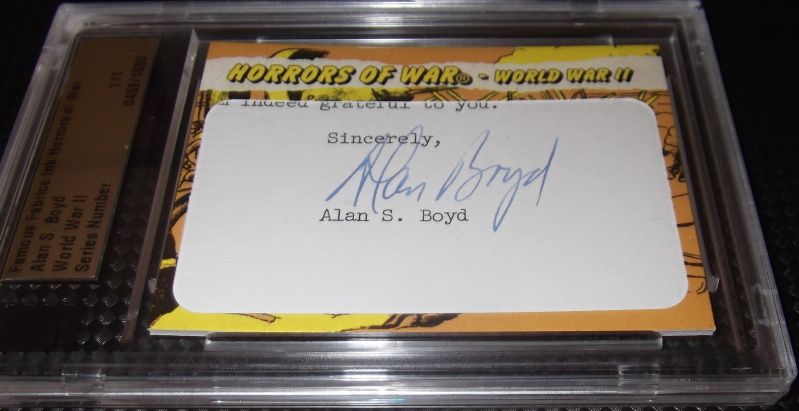 Alan S. Boyd 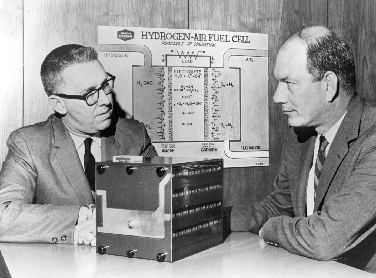 Alan Stephenson Boyd (born July 20, 1922) is an American attorney and transportation executive who led several large corporations and also served the U.S. Government in various transportation-related positions. He was the first United States Secretary of Transportation, appointed by Lyndon Johnson. Additionally, he served in executive positions with the Civil Aeronautics Board, the U.S. Department of Commerce, and was a president of Amtrak. Boyd was born in Jacksonville, Florida to Clarence Boyd and Elizabeth Stephenson Boyd. He graduated from high school in 1939, and graduated from the University of Florida in 1941. He joined the United States Army Air Forces in 1942 and remained there through the end of the war. He married Flavil Juanita Townsend on 3 April 1943. After leaving the service in 1945, Boyd returned to college and received his Juris Doctorate from the University of Virginia School of Law in 1948. He practiced law in Florida, and was on a commission exploring the regulation of the transportation industry. In 1959, he was appointed to the Civil Aeronautics Board by US President Dwight Eisenhower. He was promoted to chairman of that board by US President John F. Kennedy. He helped the airline industry by standardizing fare reductions and by approving government subsidies to encourage airline service for smaller cities. He was appointed undersecretary of commerce for transportation in 1965 by Lyndon Johnson. He was unpopular with labor leaders when he advocated reducing government restrictions on the maritime industry, and when he denounced featherbedding by railroad workers. Boyd was part of a committee that lobbied for the creation of the United States Department of Transportation, bringing together many government agencies related to the transportation industry. Boyd became the first Secretary of Transportation in November 1966. In that capacity he worked in many areas including airports, the air traffic control system, automobile safety, driver education, alcoholism, and the highway beautification program (a pet project of first lady Lady Bird Johnson). One of his sources of power was holding funding control over the interstate highways. He was unsuccessful in trying to encourage passenger train service. When Richard Nixon became US President in 1969, Boyd left the Transportation Department to become the president of the Illinois Central Railroad, a position he held from 1969 to 1972.[2] The federal government investigated the potential conflict of interest because that railroad had received aid from Boyd's department before he resigned, but no wrongdoing was found. Boyd was later the president of Amtrak[3] until June 20, 1982,[4] and the president of Airbus Industrie. In 1979 he became the chairman of Warner Blue & Mahan, a Washington, D.C. based consulting firm working on new technology ventures. Later life: Alan S. Boyd retired to Florida and later moved to Edmonds, Washington. In 1994, Boyd received the Tony Jannus Award for his contributions to commercial aviation. He also received the 2009 Philip J. Klass Award for Lifetime Achievement from Aviation Week & Space Technology. The citation read: " . . for his lifelong service to aviation, including shaping policy in the U.S." 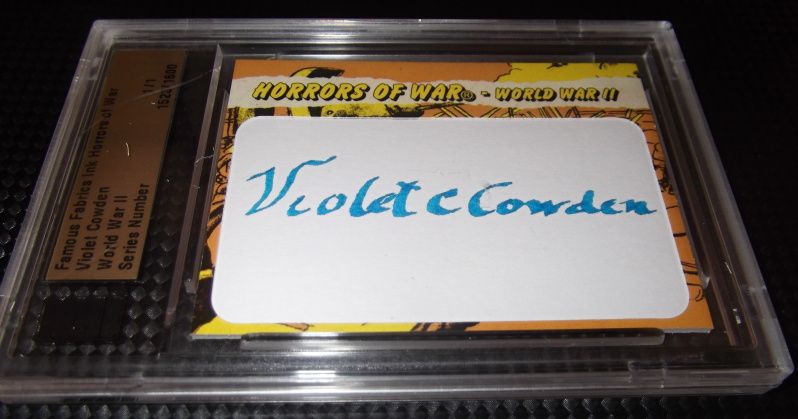 Violet Cowden 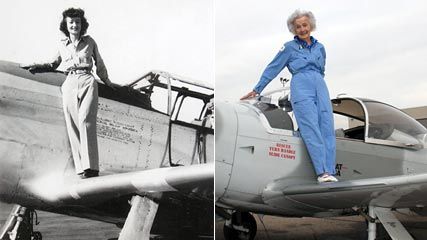 Violet "Vi" Cowden (October 1, 1916 – April 10, 2011) was an American aviator who served as a member of the Women Airforce Service Pilots (WASP) during World War II. Cowden was one of the surviving members of the 1,074 WASPs, who were the first women to fly American military planes. Cowden was born Violet Thurn and raised on a farm in Bowdle South Dakota. She taught first grade students in Spearfish, South Dakota. Cowden was issued her pilot's license before the United States entered World War II. She initially enlisted in the a volunteer women's emergency service program following the Attack on Pearl Harbor in December 1941. However, before her basic training began, Cowden joined another all women's program created by Jacqueline Cochran and General Hap Arnold through the Army Air Corps, which came to be called the Women Airforce Service Pilots, or WASP. However, Cowden who weighed only 92 pounds and stood at just 5-feet-2-inches tall at the time, was too short and too light to join the WASPs. To quickly gain weight she ate bananas and drank milk and to make herself taller she tied a wrap in her hair. She successfully gained the eight additional pounds and two inches needed to enlist. Cowden was commissioned as a member of the WASPs in March 1943. She successfully flew her first solo flight on March 5, 1943. The WASPs, including Cowden, became the first women in US history to pilot American military planes. Cowden and other members of WASP did not see combat during World War II. Their mission was to fly military planes from domestic military factories to training sites or military bases in the United States. Cowden became one of only 114 WASP to fly the fighter planes during the war, including the P-47 Thunderbolt, P-39 AiraCobra, P-63 Kingcobra, and her favorite and the "love of her life," the P-51 Mustang. Cowden, a long-time resident of Huntington Beach, California, remained very active in community affairs throughout her life. She served as the Grand Marshall of Huntington Beach's Independence Day parade. Cowden was also a member of the board of directors for the Bolsa Chica Land Trust and participated in the city's Veterans Day celebration and beach restorations. She participated in "Living History" in which World War II veterans gave speeches and presentations at high schools in southern California. and was on the Board of Directors at the Yanks Air Museum in Chino, CA where they display many of the fighter planes that she flew during WWII and now display her WASP uniform. Cowden was awarded the Congressional Gold Medal in 2010, as one of only 300 surviving members of the Women Airforce Service Pilots. Supporters had lobbied for the recognition for WASP for more than a decade. She was also the subject of the 2010 independent film, Wings of Silver: The Vi Cowden Story, directed by Mark & Christine Bonn.Among the 10 awards that her film won was the Audience Award for short films at the Newport Beach Film Festival in 2010.(in less than a year it won 5 Audience Awards and 5 Best Documentary Short awards from film festivals around North America). Cowden went skydiving with the elite Army Golden Knights when she was 89 years old.[2] On her 90th birthday she decided to go paragliding. In 2010, Cowden took part in an aerial mock dogfight over Fullerton Municipal Airport in Orange County, California.And in 2009 she again flew in the Collings Foundation P-51c Mustang, co-piloting and taking the stick for take off, landing & some fast flying in between. Violet Cowden died at 8:34 p.m. on April 10, 2011, at Hoag Memorial Hospital Presbyterian in Newport Beach, California, at the age of 94. 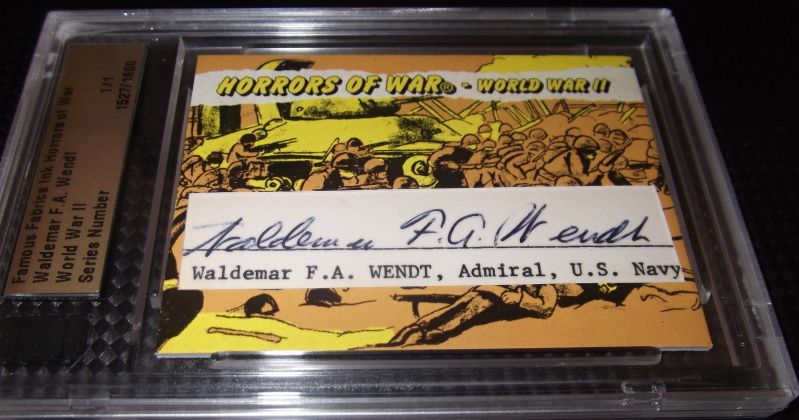 Waldemar F. A. Wendt 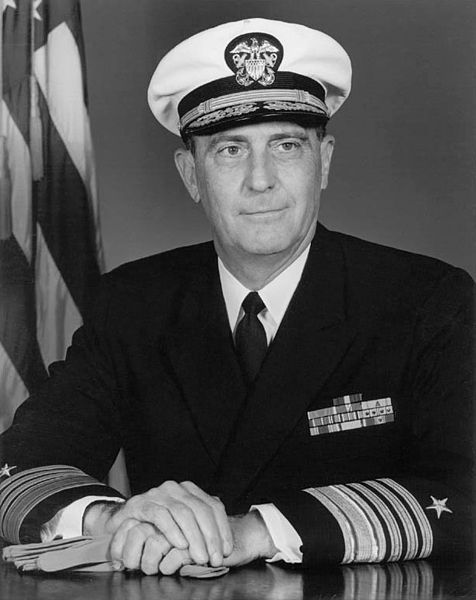 Waldemar Frederick August Wendt (March 15, 1912 – October 21, 1997) was a four-star admiral in the United States Navy who served as commander in chief of United States Naval Forces Europe from 1968 to 1971. Born in Millstadt, Illinois to Reverend Paul Wendt and Wilhelmine Thowe, he was appointed in 1929 from the state of Wisconsin to the United States Naval Academy, where he rowed on the Navy crew team and was captain of varsity oarsmen in his final year. Upon graduating, he was commissioned ensign on June 1, 1933. His first assignment was aboard the battleship Oklahoma. In March 1935 he transferred to the destroyer minelayer Ramsay. Detached in December 1935, he returned to the Academy as assistant coach of crew until June 1936, when he reported aboard the destroyer leader Moffett until June 1939. World War II He attended the Naval Postgraduate School from June to September 1939, for instruction in applied communications, but the course was cut short when President Franklin D. Roosevelt instituted Neutrality Patrol operations, in which he was engaged as gunnery officer and first lieutenant aboard the destroyer Bainbridge in the Panama Canal Zone until June 1940. He then served six months as training officer on the staff of Commander Destroyer Squadron Twenty-Seven before being transferred in December to the staff of Commander Destroyer Squadron 30 until September 1943, for duty conducting escort of convoy operations and participating in the invasion of North Africa. In December 1943, he assumed command of the destroyer Monaghan in the Pacific Fleet. He commanded Monaghan in action during the invasions of the Marshall and Marianas Islands. He was detached from Monaghan in December 1944 and assigned to the Headquarters of the Commander in Chief, United States Fleet, Fleet Admiral Ernest J. King, in Washington, D.C. Less than a month later, Monaghan was lost in the 1944 typhoon, with only six survivors. Post-war In late 1945, he became head of the Pacific Section, Fleet Operations Division, Office of the Chief of Naval Operations, Navy Department. In 1947, he reported aboard the heavy cruiser Helena to serve as executive officer until July 1948, a tour that began and ended with duty in the Far East, and included a stint as Helena's commanding officer from June to September 1947 during training operations in California waters. In August he returned to the Office of the Chief of Naval Operations as administrative assistant to the assistant chief of naval operations (strategic plans). He was a student in the Strategy and Tactics course at the Naval War College from September 1949 to June 1950, then served for a year as head of the Atlantic, Europe and Middle East Section, Strategic Plans Division, Office of the Assistant Chief of Naval Operations, Navy Department. In August 1951, he joined the staff of the Commander in Chief, U.S. Atlantic Fleet, as General Plans Officer. From August 1953 to June 1954, he commanded Escort Destroyer Division 22; then served on the faculty of the National War College from July 1954 to August 1956, where he was chairman of the committee on the curriculum. He commanded the amphibious attack transport Rankin from October 4, 1956, to November 9, 1957, and was advanced to Commander Destroyer Squadron 36 in December 1957. From February 1, 1959, he served as head of the Command and Policies Branch, Strategic Plans Division. As commander in chief of U.S. Naval Forces Europe (left), being welcomed to U.S. European Command headquarters by General David A. Burchinal, 1968. Promoted to rear admiral, he assumed command on January 17, 1960, of U.S. Naval Forces, Marianas, with additional duty as CINCPAC representative, Marianas-Bonins, as Deputy High Commissioner of the Marianas District of the Trust Territory of the Pacific Islands, and as Deputy Military Governor of the Bonin-Volcano Islands; with headquarters in Guam. In October 1961, he became Commander Destroyer Flotilla 7 (redesignated Cruiser-Destroyer Flotilla 7 on April 1, 1962) with additional duty until November 1961 as Commander Cruiser-Destroyer Force, Pacific Fleet. From August 1962, he was assigned as director of the Strategic Plans Division, Office of the Chief of Naval Operations. Advanced to vice admiral, he was appointed deputy commander in chief, U.S. Atlantic Fleet and chief of staff and aide to Commander in Chief Atlantic in Norfolk, Virginia on August 9, 1965. He became deputy chief of naval operations (plans and policy) on April 17, 1967. On May 27, 1968, President Lyndon B. Johnson nominated Wendt for promotion to admiral as commander in chief, U.S. Naval Forces Europe. He was confirmed by the Senate on June 6, 1968, and assumed his duties on July 12, 1968. Headquartered in London, England, Wendt was responsible for all U.S. naval operations in Europe, the eastern Atlantic Ocean, the Mediterranean Sea, North Africa, and the Middle East. He was relieved on June 30, 1971, and placed on the retired list with the grade of admiral on July 1, 1971. In retirement he served on the Board of Overseers of the Center for Naval Analyses from 1972 to 1983 and resided in Virginia Beach, Virginia, where he was a deacon and elder of First Presbyterian Church. He died in 1997. His decorations include three Distinguished Service Medals, awarded upon completing tours as deputy commander in chief, U.S. Atlantic Command, as deputy chief of naval operations (plans and policy), and as commander in chief, U.S. Naval Forces Europe; the Bronze Star with Combat V, awarded for commanding the destroyer Monaghan in action against enemy forces in the Pacific Area from January 1 to August 15, 1944; and the Legion of Merit, awarded for his service as director of the Strategic Plans Division.  Bernd Schazle ????????????? 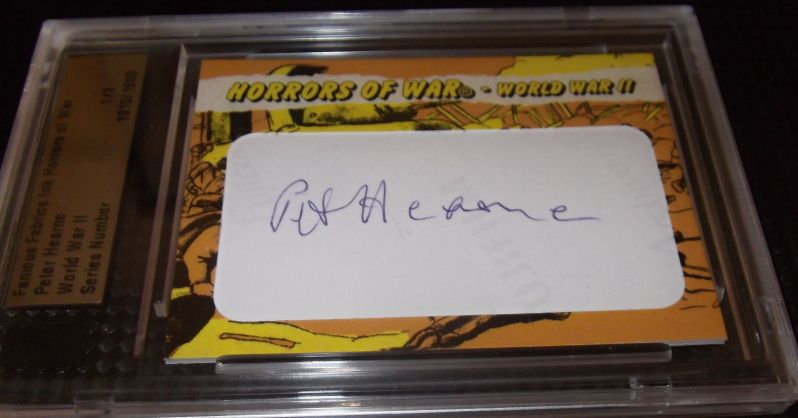 Peter Hearne 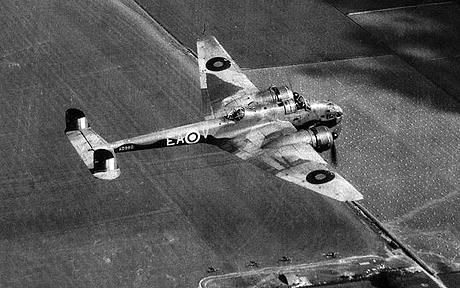 Peter Hearne WWII RAF Fighter Pilot Ace-5 victories, 19/65 Squadron. 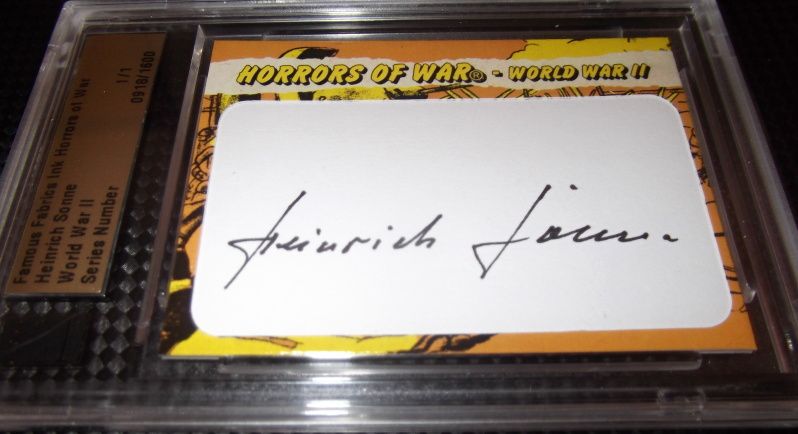 Heinrich Sonne  Heinrich Sonne (23 February 1917 – 3 December 2011) was a highly decorated Hauptsturmführer der Reserve in the Waffen-SS during World War II. He was also a recipient of the Knight's Cross of the Iron Cross. The Knight's Cross of the Iron Cross was awarded to recognise extreme battlefield bravery or successful military leadership. Sonne was born in Riga, Latvia to German parents. World War II Sonne served in the 1st SS Infatry Brigade as commander of the Krad-Schützen (motorcycle company). The 1 SS Infantry Brigade (mot) was a unit of the German Waffen SS formed from former concentration camp guards for service in the Soviet Union behind the main front line during the Second World War. They conducted anti-partisan operations in the rear of the advancing German army, and also filled gaps in the front line when called upon in emergencies. Heinrich Sonne won his Knight's Cross for his actions on the front line in the fighting around Smolensk during September 1943. Later, when the 1st SS Infantry Brigade was disbanded in early January 1944, the remaining soldiers, including Heinrich Sonne, were used to form a cadre for the 18th SS Volunteer Panzer Grenadier Division Horst Wessel. Post War Sonne was one of the very few former Waffen-SS soldiers allowed to join the Bundeswehr. This can be attributed to an unblemished military service record. He served from 1956-1973 in the Bundeswehr, eventually reaching the rank of Oberstleutnant (Lieutenant Colonel). Awards and decorations Iron Cross (1939) 2nd Class (7 January 1943) 1st Class (9 June 1943) Knight's Cross of the Iron Cross on 10 December 1943 as SS-Obersturmführer of the reserves and chief of the Krad-Schützen-Kompanie/1. SS-Infanterie-Brigade (mot.) "Reichsführer SS". 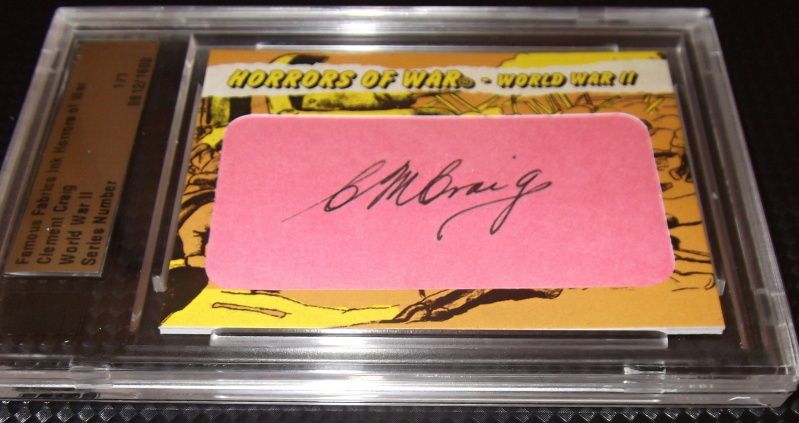 Clement Craig  WW2 US Navy ACE 12 Victories VF-22 Cowpens CVL-25 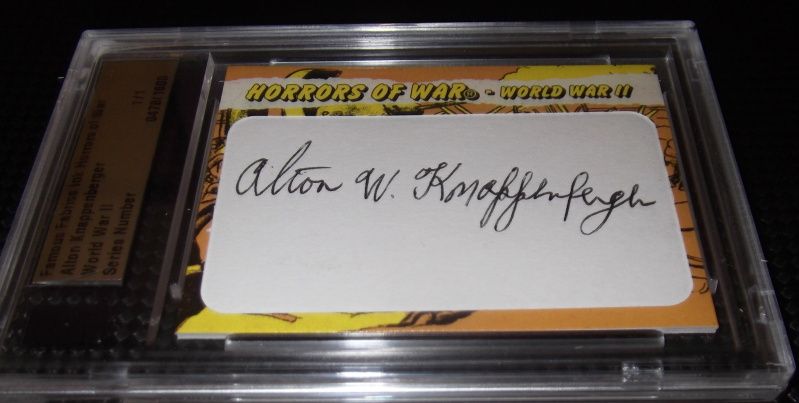 Alton W. Knappenberger 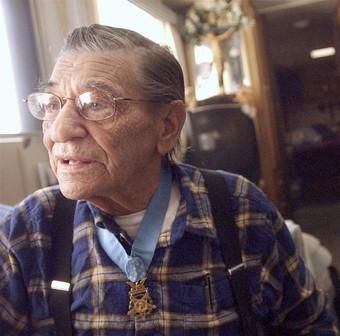 Alton Warren Knappenberger (December 31, 1923 – June 9, 2008) was a United States Army soldier and a recipient of the United States military's highest decoration—the Medal of Honor—for his actions in World War II. Knappenberger joined the Army from Spring Mount, Pennsylvania in March 1943, and by February 1, 1944 was serving as a private first class in the 30th Infantry Regiment, 3rd Infantry Division. On that day, during the Battle of Cisterna in Italy, Knappenberger held an exposed position alone and harassed the attacking Germans with his automatic rifle until he ran out of ammunition. For his actions during the battle, he was issued the Medal of Honor three months later, on May 26, 1944. Private First Class Knappenberger's official Medal of Honor citation reads: For conspicuous gallantry and intrepidity at the risk of his life above and beyond the call of duty in action involving actual conflict with the enemy, on February 1, 1944 near Cisterna di Littoria, Italy. When a heavy German counterattack was launched against his battalion, Pfc. Knappenberger crawled to an exposed knoll and went into position with his automatic rifle. An enemy machinegun 85 yards away opened fire, and bullets struck within 6 inches of him. Rising to a kneeling position, Pfc. Knappenberger opened fire on the hostile crew, knocked out the gun, killed 2 members of the crew, and wounded the third. While he fired at this hostile position, 2 Germans crawled to a point within 20 yards of the knoll and threw potato-masher grenades at him, but Pfc. Knappenberger killed them both with 1 burst from his automatic rifle. Later, a second machinegun opened fire upon his exposed position from a distance of 100 yards, and this weapon also was silenced by his well-aimed shots. Shortly thereafter, an enemy 20mm. antiaircraft gun directed fire at him, and again Pfc. Knappenberger returned fire to wound 1 member of the hostile crew. Under tank and artillery shellfire, with shells bursting within 15 yards of him, he held his precarious position and fired at all enemy infantrymen armed with machine pistols and machine-guns which he could locate. When his ammunition supply became exhausted, he crawled 15 yards forward through steady machinegun fire, removed rifle clips from the belt of a casualty, returned to his position and resumed firing to repel an assaulting German platoon armed with automatic weapons. Finally, his ammunition supply being completely exhausted, he rejoined his company. Pfc. Knappenberger's intrepid action disrupted the enemy attack for over 2 hours.  Edward George Wendorf  Ensign WENDY WENDORF, USN VF-16 (USS Lexington) Kwajalein Atoll--December 4, 1943 Edward George Wendorf was born on February 22, 1922, in the small central Texas town of West, about 80 miles south of Dallas. He was raised in West and attended school there until 1939, when he went off to the University Texas in Austin on a football scholarship. Between his freshman and sophomore years, Wendorf became interested in aviation. When a friend suggested that for just fifty dollars they could take the Civilian Pilot Training course at Hillsboro Junior College, which was just fifteen miles north of West, Wendorf agreed. At Hillsboro, the young men received all the necessary ground courses and about forty hours of flight time in Piper Cub and Taylorcraft airplanes. Upon completion, they were awarded private pilot's licenses. Shortly after Pearl Harbor, Ed Wendorf enlisted in the Naval Aviation Cadet program with the stipulation that he would not enter pilot training until June 1, 1942, so he could complete his second year of college. In June, on schedule, the Navy assigned him to the Secondary Civilian Pilot Training center at Browning Field in Austin, where he trained in Waco biplanes. Upon completion of the course at Browning in September 1942, Cadet Wendorf was sent to the Navy's pre-flight school at Athens, Georgia. In December, he was assigned to the Naval Air Station, Dallas, for Primary Flight training. He then went on to Corpus Christi for Basic and Advanced flight training. He was commissioned an ensign and designated a Naval Aviator in June 1943. After earning his wings, Ensign Wendorf was assigned to Lee Field in Jacksonville, Florida, to train in Grumman F4F Wildcat fighters with an operational training unit. Next he went to Glenview, Illinois, where he qualified for carriers aboard the converted lake steamer USS Sable. He then received orders to report to San Diego for further assignment, and after only one day in San Diego he was put aboard a ship bound for Pearl Harbor. 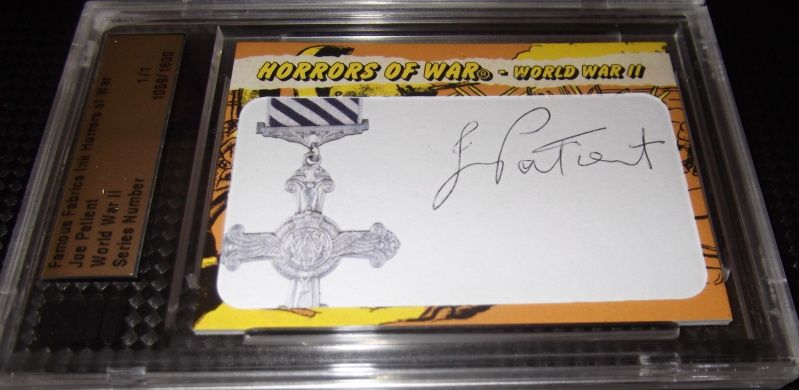 Joe Patient 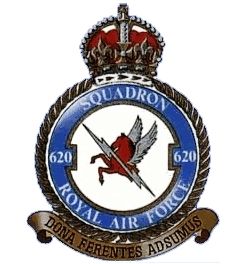 Sq. Leader Joe Patient WWII RAF Mosquito Bomber Navigator, DFC 139 Sq.59 operations over N. W. Europe.  Robert F. Foley 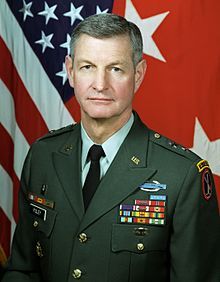 Robert Franklin Foley (born May 30, 1941) is a retired United States Army Lieutenant General who served in the Vietnam War. Born in Newton, Massachusetts, he received the Medal of Honor for leading his unit, Company A, 2d Battalion, 27th Infantry, 25th Infantry Division, in an assault on a strong enemy position on November 5, 1966. He was awarded the Medal of Honor along with Sgt John F. Baker, Jr., who earned his own medal in the same battle. Foley retired from the Army as a Lieutenant General. Foley is a 1963 graduate of the United States Military Academy at West Point and was commissioned an Infantry officer. He has held numerous command and staff positions throughout 37 years of active service. He has a Master of Business Administration from Fairleigh Dickinson University. Foley's command positions include company commander with the 25th Inf. Div. in Vietnam and battalion and brigade command with the 3rd Inf. Div. in Germany. He served as Chief of Staff for the 7th Inf. Div (Light), Fort Ord, CA; Executive Officer to the Assistant Secretary of the Army for Manpower and Reserve Affairs; Assistant Division Commander, 2nd Inf. Div., Korea; Commandant of Cadets, United States Military Academy, West Point, NY; Deputy Commanding General, Second US Army, Ft. Gillem, GA; Commanding General, US Army Military District of Washington; and Commanding General, Fifth US Army, Ft. Sam Houston, TX. Foley's awards for peacetime and combat include the Medal of Honor, two Distinguished Service Medals, the Defense Superior Service Medal, six Legions of Merit, five Meritorious Service Medals, the Bronze Star Medal, the Purple Heart and the Combat Infantryman's Badge. He was also awarded the Parachutist Badge and the Ranger Tab. After his retirement, he served as President of Marion Military Institute (MMI) in Marion, Alabama. until his resignation at the end of Academic Year 2003-2004. During his tenure at MMI, the school saw tremendous growth and recognition in Alabama, and across the United States. On October 1, 2005 General Foley became the eighth Director of Army Emergency Relief. Captain Foley's Medal of Honor citation reads: For conspicuous gallantry and intrepidity in action at the risk of his life above and beyond the call of duty. Capt. Foley's company was ordered to extricate another company of the battalion. Moving through the dense jungle to aid the besieged unit, Company A encountered a strong enemy force occupying well concealed, defensive positions, and the company's leading element quickly sustained several casualties. Capt. Foley immediately ran forward to the scene of the most intense action to direct the company's efforts. Deploying 1 platoon on the flank, he led the other 2 platoons in an attack on the enemy in the face of intense fire. During this action both radio operators accompanying him were wounded. At grave risk to himself he defied the enemy's murderous fire, and helped the wounded operators to a position where they could receive medical care. As he moved forward again 1 of his machine gun crews was wounded. Seizing the weapon, he charged forward firing the machine gun, shouting orders and rallying his men, thus maintaining the momentum of the attack. Under increasingly heavy enemy fire he ordered his assistant to take cover and, alone, Capt. Foley continued to advance firing the machine gun until the wounded had been evacuated and the attack in this area could be resumed. When movement on the other flank was halted by the enemy's fanatical defense, Capt. Foley moved to personally direct this critical phase of the battle. Leading the renewed effort he was blown off his feet and wounded by an enemy grenade. Despite his painful wounds he refused medical aid and persevered in the forefront of the attack on the enemy redoubt. He led the assault on several enemy gun emplacements and, single-handedly, destroyed 3 such positions. His outstanding personal leadership under intense enemy fire during the fierce battle which lasted for several hours, inspired his men to heroic efforts and was instrumental in the ultimate success of the operation. Capt. Foley's magnificent courage, selfless concern for his men and professional skill reflect the utmost credit upon himself and the U.S. Army. 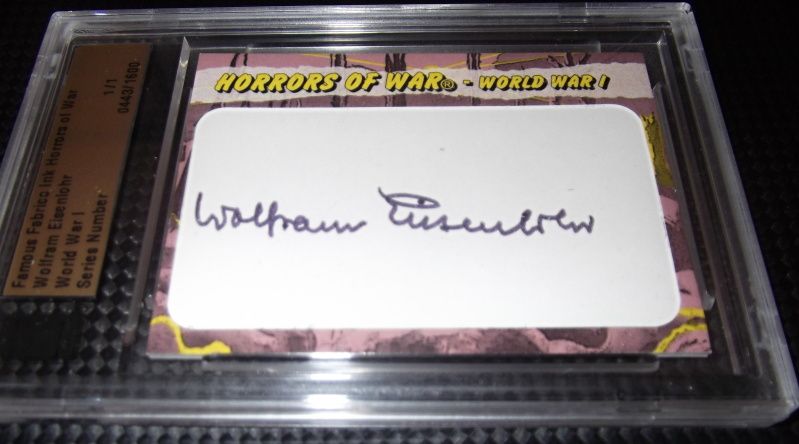 Wolfram Eisenlohr 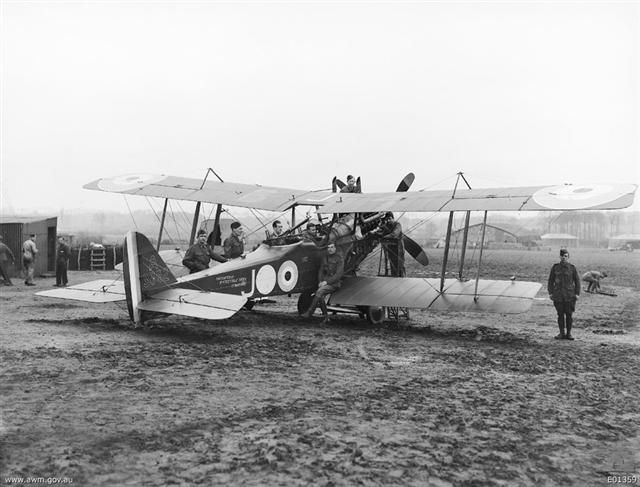 Born in Freiburg im Bresigau.Joined navy on April 1,1914.Tranfered to aviation branch in 1915.At Windau,in addition to his flying duties,he was the unit's Brieftauben Offizier (carrier pigeon officer).On August 22,1917 he and his pilot,Oberflugmaat Gruber,sank the Russian destroyer "Stroini" in the Baltic.They were flying a Friedrichshafen FF.41A.In early 1918 he was in command of the Observer School in Wiek auf Rugen.In March he became Adjutant to Seefliegerabteilung 1.In June he took command of a training and testing unit. In 1938 was in charge of the Technical Bureau of the Air Transport Ministry,whare his boss was Ernst Udet.He later rose to the post of Engineer General of the Air Force before retiring on April 30,1944. 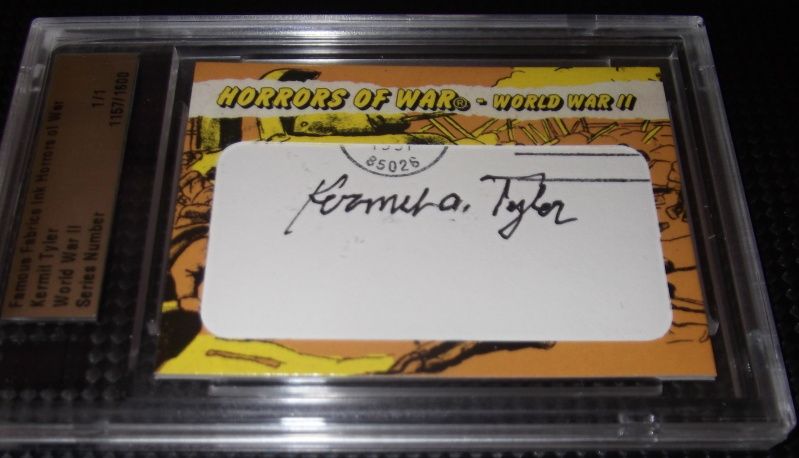 Kermit Tyler 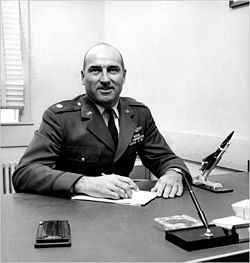 Kermit A. Tyler (April 13, 1913 – January 23, 2010)[1] was an American Air Force officer. Tyler was assigned as a pilot in the 78th Pursuit Squadron at Pearl Harbor on 7 December 1941, the day Japan attacked Pearl Harbor. On 7 December 1941, Tyler was a first lieutenant in the Army Air Force serving as the Executive Officer of the 78th Pursuit Squadron, based at Pearl Harbor. That morning he was assigned duty as the Officer In Charge of the partly activated Pearl Harbor Intercept Center. His duties were to assist the controller in ordering planes to intercept enemy planes or supposed enemy planes, after the planes got in the air. New and untrained at the time, when warned of the approach of a large aircraft flight from the north, Tyler presumed it to be the scheduled arrival of six B-17 bombers from the mainland. The radar operators were tracking Japanese planes coming to attack the base. Radar operators, operating in training mode, failed to make clear the size of the formation even though it was larger than anything they'd ever seen, and he did not pass on an alarm of "attack imminent". Following an investigation by a Naval Board of Inquiry in August 1942, it was determined that Tyler had been assigned to the Information Center with little or no training, no supervision, and no staff with which to work. Tyler was subsequently cleared on any wrongdoing by the Board and no disciplinary actions were taken against him. Later life Tyler retired as a lieutenant colonel in the United States Air Force in 1961. After leaving military service, he obtained a business degree and worked as real estate broker. Tyler died of pneumonia on January 23, 2010, at his home in San Diego, California, at the age of 96. He was predeceased by his wife, Marian, and son, Michael; and survived by three children, Julie, Carol Daniels and Terry Tyler. 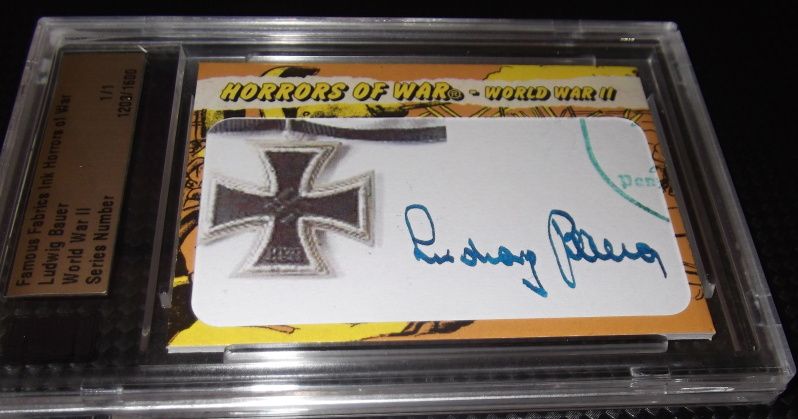 Ludwig Bauer 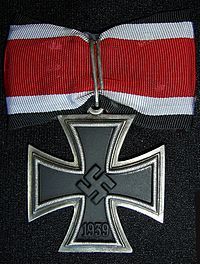 Ludwig Bauer (24 July 1912 – 26 October 1944) was a highly decorated Feldwebel in the Wehrmacht during World War II. He was also a recipient of the Knight's Cross of the Iron Cross. The Knight's Cross of the Iron Cross was awarded to recognise extreme battlefield bravery or successful military leadership. Ludwig Bauer was killed on 26 October 1944 near Rimini, Italy and was posthumously promoted to Feldwebel.  George T. Sakato 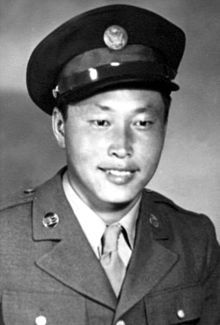 Born on February 19, 1921, in Colton, California, Sakato graduated from Redlands High School in nearby Redlands, California. His family was Japanese American, and they moved to Arizona during World War II to avoid internment. Sakato joined the Army in March 1944 and by October 29, 1944, was serving as a private in the segregated Company E, 442nd Regimental Combat Team. On that day, near Biffontaine in north-eastern France, he charged an enemy position and took command of his squad after the squad leader had been killed. For his actions during the battle, he received the Army's second-highest decoration, the Distinguished Service Cross. A 1990s review of service records for Asian Americans who received the Distinguished Service Cross during World War II led to Sakato's award being upgraded to the Medal of Honor. In a ceremony at the White House on June 21, 2000, he was presented with the Medal of Honor by President Bill Clinton. Twenty-one other Asian Americans also received the medal during the ceremony, all but seven of them posthumously. Sakato currently lives in Denver, Colorado. Medal of Honor citation Sakato in 2009 Private Sakato's official Medal of Honor citation reads: Private George T. Sakato distinguished himself by extraordinary heroism in action on 29 October 1944, on hill 617 in the vicinity of Biffontaine, France. After his platoon had virtually destroyed two enemy defense lines, during which he personally killed five enemy soldiers and captured four, his unit was pinned down by heavy enemy fire. Disregarding the enemy fire, Private Sakato made a one-man rush that encouraged his platoon to charge and destroy the enemy strongpoint. While his platoon was reorganizing, he proved to be the inspiration of his squad in halting a counter-attack on the left flank during which his squad leader was killed. Taking charge of the squad, he continued his relentless tactics, using an enemy rifle and P-38 pistol to stop an organized enemy attack. During this entire action, he killed 12 and wounded two, personally captured four and assisted his platoon in taking 34 prisoners. By continuously ignoring enemy fire, and by his gallant courage and fighting spirit, he turned impending defeat into victory and helped his platoon complete its mission. Private Sakato's extraordinary heroism and devotion to duty are in keeping with the highest traditions of military service and reflect great credit on him, his unit, and the United States Army. | |||
|
| Member |
Quite amazing, it must be fun to collect this stuff if You are interested in it. You have really put down time and researching in this stuff. It´s great to read all this trivia, I especially like that this is not based on a tv-show, You can do card sets of anything. Man You know Your stuff! | |||
|
| Member |
thanks it was a lot of fun doing the research and finding out about these brave men and women. some of the thing they did is incredible. | |||
|
| NSU Writer |
Quite impressive, 4444. I am a military buff, and I avoided this product because there were a lot of political signers and unknowns in there.That said, I think by finding so many Medal of Honor winners, and Knight's Cross winners, you did really well. The survivor of the Indianapolis and the WASP are also good finds, as well as the Flying Tigers. Nicely done. | |||
|
| Gold Card Talk Member |
The cards are great looking and I also appreciate the research, but I wouldn't want the signatures or even pictures of any Nazis as a "collectable". I'd definitely have to get rid of those if I collected this set, but it'd be a quandary because I don't even think I'd want to sell them. Can this set even be sold in Germany due to the inclusion of those cards? ____________________ Everywhere around this burg they're running out of verbs, adverbs, and adjectives. Everywhere around this town, they're running out of nouns. | |||
|
| Member |
thanks guys i wont be selling any of these as i really love this product | |||
|
| Bronze Card Talk Member |
I think @chesspieceface raises a good question about the marketing/sale of such a set in different countries. I also agree about not wanting to 'own' piece of Nazi memorabillia - though I'd feel that way about any war memorabilia that's real and not recreated. Though I don't wish to get 'political' here. Having said that - here's a hypocritical comment - I really like the cards - Military history interests me but not sure how I'd feel owning parts of it. Thanks 4444 for sharing you no doubt have a very impressive collection now! | |||
|
| NSU Writer |
TC00, lots of people feel that way - I have been collecting militaria for longer than I have cards. I had a large number of German WW II items, although now most of them have been sold off. Once a friend came over, saw my collection and really got upset, that I had all these weapons, helmets and uniforms around. Since then, a couple of other people have said the stuff bothers them. I have a lot of friends that collect this stuff though, and there is a big market for it. To me, it's a way of remembering the vets. I also have met a couple of former German soldiers and they really were nice guys, very much like US and New Zealand vets I have known. | |||
|
| Bronze Card Talk Member |
I agree Don, regardless of a soldiers nationality or country of enlistment, they cannot be held accountable for how history views their sacrifices. It's nice to know people still remember individuals through these items. Memorabilia aside, it's a very well designed and put together card set. | |||
|
| Gold Card Talk Member |
That is from the description above of Hajo Herrman, one of the Knight's Cross winners. This fellow was a loathsome monster. His side lost and he spent the rest of his life acting like they won. He should be celebrated by no one, and anything that remotely resembles commemorating his miserable life is frankly sickening. If you don't believe me, read the Wikipeida description of one of the people he defended, David Irving, himself a reprehensible human being. (Read a little about the Institute for Historical Review, the IHR, of which ol' Hajo was cited as a "friend" of, while you're at it. Stomach churning fellows, those.) More about Herrman: "Until his death at the age of 97, he remained steadfastly loyal to his people, his heritage, and the ideals of his youth". This means he was an unrepentant Nazi all the way until the blessed day he finally died in 2010. With that said, I probably have things in my collection that some people would take umbrage with, so I don't mean to impugn any collectors who may have some of these cards for purely historical purposes. I just despise Nazis. I wouldn't be too happy about cards for heroes of the Confederacy either. There really should be consequences to your side having it handed to them in a war. One of them is that there should be no heroes at all from the losing side, the side that history rightly remembers as being wrong from the very start. Germans were never "Supermen" or superior to any other race in any way, and the 1860's South was never for a moment the American ideal. They fought against the very notion of it (that all men are created equal, that is). Determined? Definitely. Brave? Possibly. Heroic? No way in heck.This message has been edited. Last edited by: chesspieceface, ____________________ Everywhere around this burg they're running out of verbs, adverbs, and adjectives. Everywhere around this town, they're running out of nouns. | |||
|
| Member |
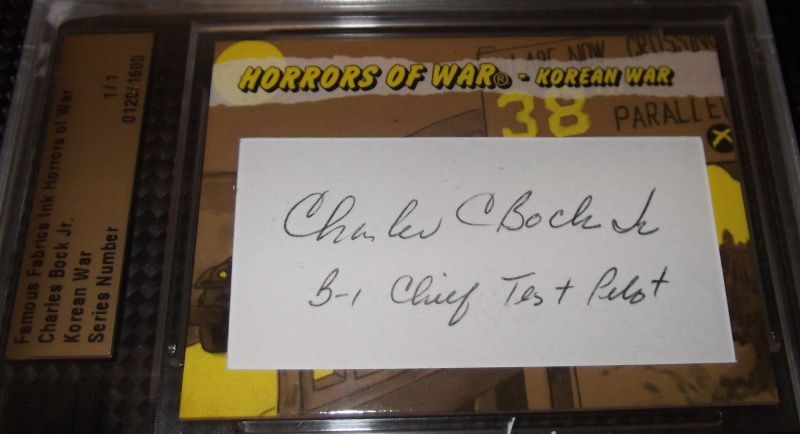 Charles Bock Jr 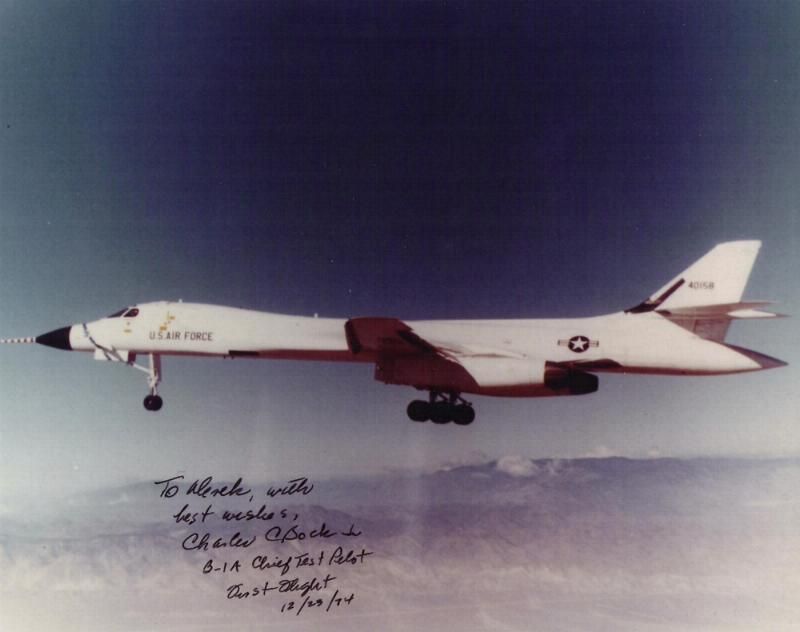 A veteran of Korea with the 3rd Bomb Wing and Vietnam with the 35th Tactical Fighter Wing, Charlie Bock flew 103 combat missions. During his military career he was trained as a test pilot and later as a military astronaut-designee. He was twice assigned to Flight Test Operations at Edwards AFB. He joined the YF-12/SR-71 Test Force in 1965. As Operations Officer on the Blackbird Test Program, he piloted stability, control and performance flights, which surpassed Mach 3 and 80,000 feet. He successfully participated in the extension of the operational envelope of the SR-71. Bock retired from the Air Force in 1973 to take a position with Rockwell International Corp. as chief test pilot for the B-1 bomber program. In December 1974, he piloted the first flight of the bomber. He was responsible for all aircrew training and had a major influence in the formulation of the B-1 flight test program priorities and objectives. He retired from Rockwell in 1981, and from 1984 to 1987 was a consultant to Northrop Crop. on the B-2 Stealth bomber. During his flying career, Bock logged over 10,000 hours in more than 70 types of aircraft. Born in Iowa in 1925, he received a B.S. in Aeronautical Engineering from Purdue University in 1949. Bock was also a graduate of the USAF Test Pilot School, the USAF Aerospace Research Pilot School, the Air Command and Staff College, and the Industrial College of the Armed Forces. A fellow of the Society of Experimental Test Pilots, he received the Society’s Ray E. Tenhoff Award and the Iven C. Kincheloe Award. Bock has also been honored by the Legion of Merit, two Distinguished Flying Crosses, six air Medals and the Aerospace Walk of Honor (1994).  Joseph McGraw 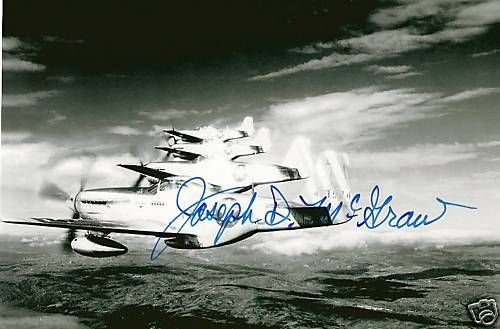 WWII American Fighter Pilot Ace with 5 victories  James Pierce 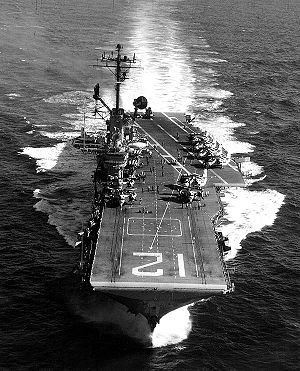 VF 18 USS Bunker Hill VF 17 USS Hornet 7 Aerial Victories 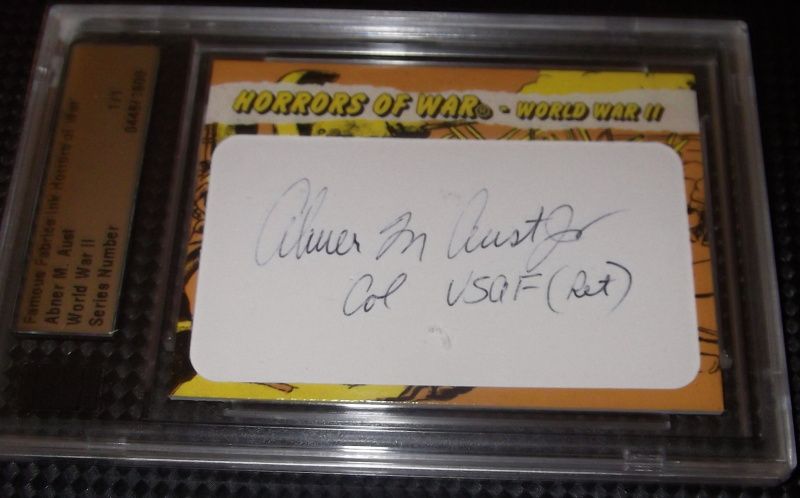 Abner M. Aust 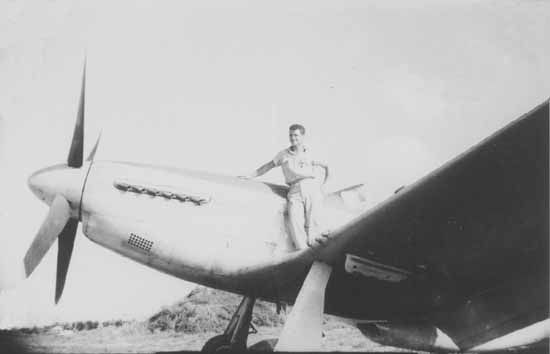 Colonel Abner M. Aust Jr. graduated from the Army Air Corps flying school at Luke Field in April 1943. His class was the first at Luke to fly the P40 before graduation. Flew P39, P40, P47, P51, A24 and A26 air#@craft as a fighter instructor before going into combat. He flew P51s from Guam, Tinian, and Iwo Jima with the 506th Very long Range Fighter Group. Colonel Aust's first encounter with the enemy occurred over Nagoya, Japan. He attacked six Franks and when the fight was over he had destroyed three and damaged three more. On 17 July 1945, Abner Aust led an 8 aircraft sweep over the main island of Honshu. This sweep started about 100 miles NE of Tokyo and ended South#@east of Tokyo at a very well camouflaged fighter base. After repeated attacks on this field, the score was 26 aircraft destroyed or damaged. Aust was credited with 3 destroyed and 3 damaged. On 10 August 1945, Colonel Aust probably became the last Ace of WWII when he destroyed 2 Japanese aircraft and damaged one other. On several other missions, he was credited with destroying several trains, at least three large fishing boats and damaging one destroyer. Tally Record: 8 destroyed, 7 damaged. 5 air 3 ground. Colonel Aust flew with the following fighter groups and wings: 83rd, 506th, 36th, 20th, 12th, 33rd, 388th, 31st and 3rd. He commanded the 33rd, 31st and 3rd TFWs. He commanded the 31st TFW in Vietnam and during his tour he flew 300 combat missions over South and North Vietnam. Colonel Aust was awarded the Legion of Merit, DFC with 3 clusters, Bronze Star, Air Medal with 25 clusters and three high ranking Vietnam decorations. Colonel Aust retired on 1 July 1972 after 30 years of active duty mostly in fighter units and fighter operations. He first flew jet aircraft in 1947 and he flew almost every jet fighter except the F86. He flew the P51, F100 and F4 in combat. He had acquired about 7000 hours with over 500 in combat when he retired. He prepared the first copy of the Fighter Tactics/Doctrine Manual in 1963 and originated many improvements in fighter operations and fighter aircraft. WORLD WAR II ACE, RETIRED COLONEL, SENT TO PRISON FOR TWO YEARS Fifty-five years ago, a young Army pilot shot down two Japanese Zero fighter-planes over Tokyo in August 1945, becoming one of the last "aces" of World War II. Retired Air Force Col. Abner M. Aust went on to enjoy a long military career, topped with 300 missions over Vietnam and the Distingushed Flying Cross. But today the 79 year-old war hero's life is in ruins. Aust is on his way to prison for the next two years after offering a dump truck and $10,000 to have someone burn down his ex-wife Brenda's house. That someone turned out to be a confidential informant for the Polk County, Fla. Sheriff's Dept. It could have been worse. By pleading no contest to an arson charge, Aust, avoided the more serious charge of soliciting to commit first-degree murder. The Austs were divorced in 1987. 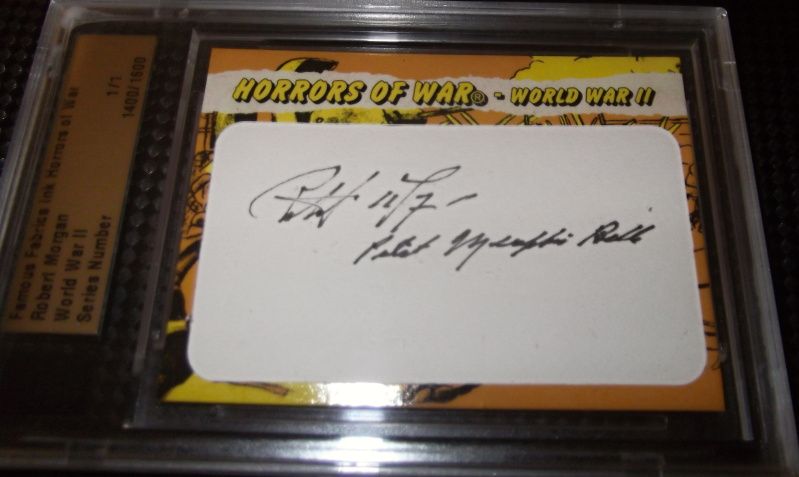 Robert K. Morgan 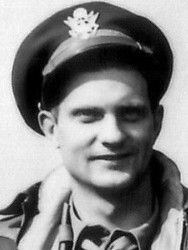 “He’s a damn good pilot. He always brought us home” These words from a crew member of the B-17 “Memphis Belle” probably best sum up Bob Morgan’s military career. Commanded by Morgan, the B-17 Memphis Belle was the first of the heavy bombers to achieve 25 missions over Europe. The plane and her crew were immortalized in a 1943 combat documentary directed and filmed by William Wyler ; and again in 1990 by a Warner Bros. Hollywood movie (produced by Wyler’s daughter, Catherine) - both were titled “Memphis Belle”. “There were no easy missions”, says Morgan, who never lost a crew member. “But, the secret to the B-17 was the capability of flying in tight formations - so tight that the wings were often almost touching. We were able to put out an amazing amount of firepower. That, and the Norden Bomb Sight, which made us extremely accurate at high altitudes. I also positively feel that was a bit of divine intervention for our crew. Morgan, born July 31, 1918 in Asheville, NC (he has lived his entire life there) in the Western North Carolina Blue Ridge Mountains, was a student of history and realized early on that America would get into the war. After attending the University of PA Wharton School of Finance, he joined the Army Air Corps in 1940. His basic flight training took place in Camden, S.C.; Primary Training at Bush Field, Augusta, GA; and Barksdale Field, LA; B-17 training at McDill Field, Tampa, FL; and Advanced B-17 Training in Walla Walla, WA. On December 12, 1941 (five days after Pearl Harbor), he pinned on his Pilot Wings and received his Second Lieutenant bars. In October 1942, Morgan flew the Memphis Belle to Bassingbourn, England, home of the 91st Bomb Group, 324th Bombardment Squadron. “Back then,” Morgan recalls, “there was no book on high altitude strategic bombing. The Generals didn’t know anymore than we did. They had to figure bombing strategy as we went along.. Initially, the Memphis Belle flew missions into France and the Low Countries, but in early 1943, Germany became the target. In the first three months of the Belle’s sorties from Bassingbourn, 80% of their Bomb Group were shot down. Moral was low, so the Generals set the completion of 25 missions as an incentive for a man to go home. Morgan frequently speaks to school kids and explains, “80% losses means you had breakfast with 10 men; dinner with only 2 of those 10. On 17 May 43, the Memphis Belle crew became the first to complete 25 missions; then return to the United States on their 26th Mission.. In June 1943, the crew departed England for the United States and began a 30-city Public Relations/Warbond Tour. First stop - Washington Natl. Airport, D.C., where Morgan was ordered to buzz the field. All the dignitaries ducked when he made a low pass over the reviewing stand. All through the tour the crew thanked the American public for their war efforts. They told them what was really going on in the war. The boys (Morgan was 23) were treated as heroes everywhere they went. Wined and dined from June through August of ‘43. The red carpet was rolled out in every city. They even took their mascot, Stuka (a black Scottie dog), with them. The tour was an emotional, but exhausting event for the crew, but an incredible moral boost for them and the public. Then it was over. The Generals told the crew they could have any job they wanted in the Air Corp. (except theirs). Morgan had seen the still secret B-29 during the tour in Wichita and volunteered to train in this new bomber. He wanted to command his own B-29 Squadron and he trained hard and earned it. In Oct 1944 he deployed to Saipan in his brand new B-29 named Dauntless Dotty. They were assigned to the 20th AF, 73rd Bombardment Wing, 497th Group, 869th Squadron. On 24 Nov 44, Morgan made history with another “first”. With Gen. Rosie O’Donnell on board Dotty as command pilot, Morgan led the first B-29 bombing raid on Tokyo (this was the first time the U.S. had bombed Tokyo since the ‘42 Doolittle raid in B-25s). The mission was successful. After completing another 24 B-29 missions, Morgan was sent home in April 1945. He continued to serve his country in the USAF Reserve and retired in 1965 as a full Colonel. At age 81, he still holds an active pilot’s license and works full-time in the real estate business and makes personal appearances around the world. In April 1999 he was invited to fly the Boeing B-52 at Barksdale AFB, Shreveport, LA and in October 1999, he was invited to fly the subsonic B-1B Bomber at Robins AFB, Georgia. Robins subsequently named one of its B-1’s “Memphis Belle” and painted the new noseart on in February, 2000. He and his wife, Linda (also a pilot), have five children between them, and eight grandchildren. They own two Olde English Sheepdogs and a mutt and are active in animal welfare. Awards: The President of the United States of America, authorized by Act of Congress, July 2, 1926, takes pleasure in presenting the Distinguished Flying Cross to Captain (Air Corps) Robert K. Morgan (ASN: 0-430609), United States Army Air Forces, for extraordinary achievement while participating in aerial flight while serving as Pilot of a B-17 airplane, 91st Bombardment Group (Heavy), EIGHTH Air Force, on twenty-five bombardment missions over enemy occupied Continental Europe. Displaying great courage and skill, Captain Morgan has materially aided in the success of each of the twenty-five missions and his actions are an inspiring example for his fellow flyers. The courage, coolness and skill displayed by Captain Morgan on all these occasions reflect the highest credit upon himself and the Armed Forces of the United States. The President of the United States of America, authorized by Act of Congress, July 2, 1926, takes pleasure in presenting a Bronze Oak Leaf Cluster in lieu of a Second Award of the Distinguished Flying Cross to Lieutenant Colonel (Air Corps) Robert K. Morgan (ASN: 0-430609), United States Army Air Forces, for extraordinary achievement while participating in aerial flight as Airplane Commander and Squadron Leader, 869th Bombardment Squadron, 497th Bombardment Group, TWENTY-FIRST Air Force, on 18 December 1944. Flying in the lead ship of the formation, Colonel Morgan successfully led his squadron of B-29 aircraft to a vital target on the Japanese mainland. Heavy fighter attacks and anti-aircraft fire were encountered. Because of bad weather the approach to the target and the bomb run were made by instruments. A momentary break in the clouds permitted last minute visual corrections and the bombs were released on the target causing extensive damage to a vital link in the enemy's aircraft production program. The professional skill and leadership displayed by Colonel Morgan reflect the highest credit on himself and the Army Air Forces. (Citation Needed) - SYNOPSIS: Lieutenant Colonel (Air Corps) Robert K. Morgan (ASN: 0-430609), United States Army Air Forces, was awarded a Second Bronze Oak Leaf Cluster in lieu of a Third Award of the Distinguished Flying Cross for extraordinary achievement while participating in aerial flight during World War II.This message has been edited. Last edited by: 4444, | |||
|
| Member |
Nice set, a true piece of history thats quickly vanishing. | |||
|
| Member |
thank you | |||
|
| Powered by Social Strata |
| Please Wait. Your request is being processed... |
|

